
The Future of Reykjavík Energy
Icelandic Engineering Abroad
The Unique Icelandic Wool
The Saga Path in West Iceland
The President of Iceland in Georgia
The Graphic Design of Goddur
I ssue 53 • 2024

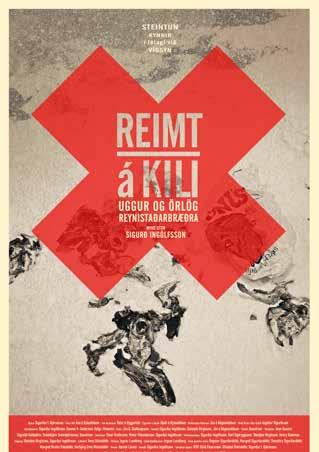

There is a good reason why “sheep” and “money” share the same noun for a name in Icelandic. The Icelandic sheep has been an invaluable resource to the people of Iceland since settlement times in the 9th century. As livestock, the sheep provide the settlers and their descendants with meat and dairy products to sustain themselves, but the role of Icelandic wool cannot be underestimated in keeping Icelanders alive throughout the following millennia. With Iceland’s location on the globe, just touching the Arctic Circle, the weather can be calamitous on land and treacherous at sea. This is where the unique traits of Icelandic wool prove their mettle: the Icelandic wool has outstanding breathability as well as thermal insulation, since the wool is dual coated with a distinctive

combination of inner and outer fibres. The inner fibres are fine, soft, and highly insulating, while the outer fibres are long, strong, and weather-resistant. The combination thereof results in lightweight, water-repellent, and highly breathable wool.
Today, the characteristics of Icelandic Wool are renowned worldwide, and wool products from Iceland remain highly sought after, whether it’s a Lopapeysa (wool sweater), a cozy blanket, or other items. Almost every tourist coming to Iceland leaves with an item made from Icelandic Wool, appreciating its unique properties. Just as with the inhabitants, more than 1,100 years of fighting the sub-arctic climate and isolation have given Icelandic wool a distinctive character.
Einar Th. Thorsteinsson
Contents
MANAGING EDITOR & GENERAL MANAGER
Einar Th. Thorsteinsson einar@icelandictimes.com
WRITERS
Páll Stefánsson
Jón Agnar Ólason
Andrew Scott Fortune
Jenna Gottlieb
Hallur Hallsson
Helga Kjartansdóttir
Sigrún Pétursdóttir
Delphine Briois
Svava Jónsdóttir
SALES & MARKETING
Úna Jóhannsdóttir
Una@icelandictimes.com
WEBSITE
Vilhjálmur Langfeldt
FRONT COVER PHOTO
Páll Stefánsson
Þingvellir
GRAPHIC DESIGN
Jacqueline Sanz PUBLISHER
Páll Stefánsson
Helga Dís Björgúlfsdóttir
TRANSLATIONS
Úna Jóhannsdóttir
Axelle Detaille
Jennifer Miethe
Icelandic is one of the European root languages, like Latin. There is no ‘c’ or ‘z’ in modern Icelandic, except in foreign words. However, it still contains some letters not found in most other languages. This basic list provides a general idea of their sounds, using familiar words rather than phonetics.


Icelandic Times
Síðumúla 29 • 108 Reykjavík +354 578 2600 info@icelandictimes.com icelandictimes.com
www.icelandictimes.com 3 A piece of Icelandic Art History 4 Make your Own Wool Monster 6 President of Iceland visits Georgia 8 Remembering a Friend of Iceland 9 Verkís 10 Reykjavík Energy Looks to the Future 12 80 Years of Energy in Iceland 16 Geotherma Exhibition 18 No Creative is as Original as he Thinks he is 20 Commerce between Iceland and Russia 24 The Icelandic Art Prize Breiðholt 28 Culture is blooming at Harpa this Summer 30 The Iceland Phallological Museum 32 Anna María Design 33 64° Reykjavík Distillery 35 The Uniqueness of Icelandic Wool 36 The Óffeigur Family Workshop 38 The Mantle Below Reykjanes 40 The Saga Path 42 Krauma Geothermal Baths 44 Dalabyggð 48 Kerlingarfjall 50 Hvanneyri In Skallagrímur’s Settlement Area 52 Photo Series From the West 54 The westernmost Part of snæfellsnes 56 Go West 58 Rauðasandur South Of Patreksfjörður 60 Almost the Northernmost Point 62 Laufskálarétt 64 Mývatn Tours 66 Akureyri 68 Husavík Museum 70 Bird Paradise 72 Exploring Beautiful Vopnafjörður 73 Of Course de East 74 My Mother's Dream 76 A Taste of Iceland´s Wild & Sweet 78 Discover and Ice-Blue World 79 The Skaftareldar Disaster 80 Sagnaheimar Folk Museum 82 Skógar Museum 83 Glacier Jeeps 84 Volcanic Vestmannaeyjar 86 Hotel Dyrhólaey 88 The Homely Herd´s Lair 90 A delightful Experience in Stokkseyri 91 A Little Bit of Icelandic Paradise 92 Dreaming of Iceland 93 The Women of Eyrarbakki 95 Ewes, Rams, and Lots of Wool 96 The Bobby Fischer Center 98 The opinions expressed in Icelandic Times do not necessarily reflect those of the editor, publishers or their agents. Though the contents of this issue have been meticulously prepared, no warranty is made about the accuracy and completeness thereof. Copyright © 2024 Nordic Times All rights reserved How to make use of QR codes Like ‘ow’ in ‘cow’ Like the personal pronoun ‘I’ Like ‘th’ in ‘with’ Like ‘th’ in ‘thing’
Character Pronunciation á æ ð þ Icelandic language Credits Use your QR code reader application on your smartphone or iPad to scan the QR codes. QR code reader applications can be downloaded free for all makes of smartphones
Printed in Sweden by V-TAP

A piece of ICELANDIC ART HISTORY
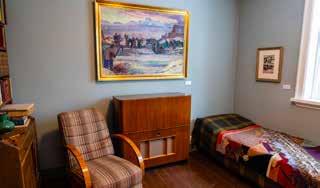
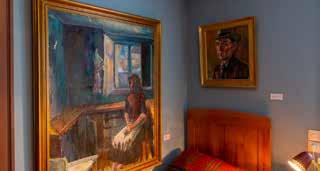
Ásgrímur Jónsson’s house is home to a stunning collection
Artist Ásgrímur Jónsson (1876-1958) is one of the pioneers of Icelandic art history and became the first Icelandic painter to make art his main occupation. He studied at the Royal Academy of Arts in Copenhagen, and after completing his studies, he travelled around Denmark, Italy and Germany before returning home to Iceland.
Icelandic nature was Ásgrímur’s main subject, and his work laid the foundation for Icelandic landscape art. His view of nature was shaped by the romanticism of the 19th century, and he remained faithful to it, although his focus and working methods changed during his nearly 60year career as an artist. Ásgrímur also pioneered the illustration of Icelandic legends and fairy tales and is one of Iceland’s most active folklore illustrators. Ásgrímur painted in nature and made a special effort to interpret the light of the land. He painted with watercolours and oils and occupies a special place in Icelandic art as a watercolour painter. Ásgrímur died in 1958 and bequeathed to the Icelandic nation all his works of art, together with a house at Bergstaðastræti 74 in Reykjavík. In 1960, Ásgrímssafn
was opened in his house. In 1987, when the Icelandic Museum of Art moved to its premises, Ásgrímur’s collection was merged with the Museum of Art according to the provisions of his will.
The current exhibition at Ásgrímssafn is Gluggi í Reykjavík (Window in Reykjavík), a selection of works by Ásgrímur. The view from the window in Vinaminni, where he first lived after his return to Iceland, became a familiar motif for him, with Reykjavík harbour and Esja facing each other. Also, the view to the south from the studio’s skylight at Bergstaðarstræti 14 became another inspiration. The watercolours capture the light of the land in his work.
Ásgrímur’s life’s work, his art, spans a long period in the nation’s history, a time when rural society began to disperse, and Reykjavík changed from a town to a city. Many of Ásgrímur’s paintings from Reykjavík, painted in the first half of the 20th century, depict a peaceful small town where houses are huddled on the far side of the sea but also display a vibrant city. Paintings show people working on street construction in an urban society in the making. The artist’s perspective looking

from the artist’s window, 1948 Ásgrímur Jónsson, (1876-1958)
out the window is a common subject in art history. The intimacy with the artist is excellent in these works, and in Ásgrím’s house, you can see through the window the same perspective that Ásgrímur captured on canvas and paper. The unique shades of the houses in the town are enjoyed, and despite the changing times, the Reykjavík that Ásgrímur knew so well and in his works can be seen many of the city’s well-known landmarks today, such as Tjörnin. -JG

Tourism , C ulT ure and B usiness issue 53 • 2024 4
View
Bergstaðastræti 74 101 Reykjavík
Photo from the home of the artist Ásgrímur Jónsson, (1876-1958) at the exhibition.
Ásgrímssafn
S TU NNIN G

This is a living land. Here creation and destruction are simultaneous, as continuous as the rhythm of breathing.

Man hasn’t the imagination to think of shapes that don’t exist in nature.
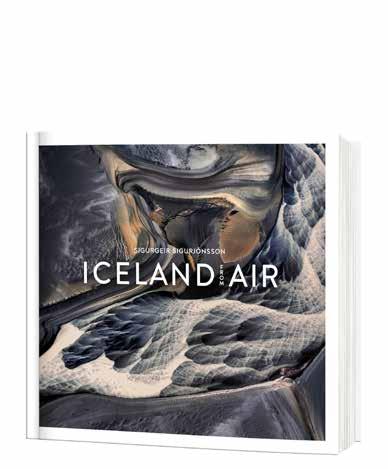
www.icelandictimes.com 5 B ókabúð F orlag sin s | Fi sk i slóð 3 9 V irka daga 10 –18 | L au 11–17 | Sun 12–16 ww w.f orlagid . i s
H
Y
BIG
OR SMALL
Make your own
WOOL MONSTER
Join a workshop to design the cutest Icelandic souvenir
Are you looking for a unique and adorable souvenir from your trip to Iceland? Skrímslis are unique stuffed “monsters “made from 100% Icelandic wool and locally sourced fabrics; they are sewn and made with love by Icelanders.
Skrímslis start with all kinds of small fabric cuttings to make hands, feet, horns and tails, and the bodies are from leftover fabrics from a local wool manufacturer. Then, the fun starts with Skrímslis being topped with hair or horns, making them as unique as possible. They are sewn, highquality safety eyes from Japan are inserted, a mouth is handsewn with pure Icelandic wool yarn, the filling is put in, and finally, the Skrímsli is sewn closed.
History of Skrímsli
Alma Björk, a mother of three and an entrepreneur with a diploma in finance and a master’s in business, owns Monstri ehf.
After a road trip around Iceland in 2009, she stopped in Vik, a small country town in the south of Iceland, to stay with a friend. They visited a wool manufacturer in town to buy wool to make some sweaters for themselves and their family, and the beginning of the Skrímsli adventure was born!
She began selling her products in local stores, and as leftover fabrics piled up, Alma Björk found it a waste to throw them out. She wanted to make something useful with them, and the first Skrimslis were sewn. The demand for the Skrimslis increased, and soon, Alma Björk was buying leftover fabric from her local wool manufacturer to keep her production as sustainable as possible.
Join a fun workshop!
If you are in Iceland, a great way to spend some time is to join a Skrímsli workshop hosted by Alma Björk, who welcomes groups to her home. All ages are welcome, and a typical workshop lasts about one hour. Guests can design their own Skrímsli, personalising it to their liking while Alma Björk assembles it. These workshops are a lot of fun, and Alma Björk’s garden is a perfect



place to relax, enjoy good weather and design the monster of your dreams.
Who is the workshop for?
The workshop is fun for both kids and adults. Many different groups join, from friends to families and groups of kids.
Private experience
The workshop is always a private experience. You book the session for your group, and no one else will be there but your group. The workshop is the best place to celebrate if you or a group member have a birthday! You can contact Alma in advance, and she can arrange the cake and decorations for you at an extra cost.
The launch of the first Skrímsli book
In 2017, Alma Björk published her first book about the Skrimsli, which Alma Björk and the Icelandic writer Eyrún Ósk Jónsdóttir co-wrote. The book tells the story of how the Skrimslis came to be and how, due to technology, they were suddenly forced to leave their homes and, for the first time in their lives, prepare for the cold, harsh winter of the north on their own. Later this year, Alma will be publishing the next book, so stay tuned!
Buy your own Skrímsli
You can find Skrímslis for sale in 17 stores across Iceland, including Duty-Free Iceland at Keflavik International Airport, to make sure you don‘t have to leave the country without a local monster. However, if you don‘t find yourself currently in Iceland, you can get in touch with the designer directly through the website www.skrimsli.eu, and Alma Björk will ship your monster abroad.

Monstri ehf
Lambhagi 17, 225 Álftanes skrimsli@skrimsli.eu www.skrimsli.eu
Tourism , C ulT ure and B usiness issue 53 • 2024
Alma Björk





LOW PRICE FUEL with Orkan card to your Apple/Google wallet Scan QR code to get your Orkan card or visit orkan.is/english Stations around Iceland 72
PRESIDENT OF ICELAND
visits Georgia
“Now I’m back home after an official visit to Georgia. The trip was successful in every way. Accompanying me was Guðlaugur Þór Þórðarson, Minister for the Environment, Energy, and Climate, along with a business delegation led by Nótt Thorberg, CEO of Green by Iceland. Our host, President Salome Zourabichvili, welcomed us warmly, as did everyone else who received us Icelanders in this distant and beautiful country. We learned about its history and culture and worked to strengthen connections between Iceland and Georgia, particularly in the field of green energy.
In Georgia, both geothermal and hydropower resources are utilized, and during our bilateral meetings, there was significant interest in enhancing cooperation between our nations. As a result of this collaboration, the Akhalkalaki hydropower station has been established, marking (National Power Company of Iceland) Landsvirkjun’s first investment beyond national borders. It now provides electricity to around 30,000 Georgian households.
Between Iceland and Georgia, there are also literary connection worth exploring further. Accompanying me on this visit was Bergur Þorgeirsson, the director of Snorrastofa, the cultural and medieval research center named after Snorri Sturluson. Together, we met with the rector and head of the Scandinavian Studies Department at Tbilisi State University to discuss potential collaboration on research related to the connections between ancient Icelandic literature and medieval Georgian texts. One of their prominent poets, Shota Rustaveli, lived during the same period as Snorri Sturluson, and several ancient manuscripts mention Georgia and its surroundings. At the university, I also delivered a lecture on Iceland’s impact on the international stage and had a meeting with the Icelandic Association in Tbilisi.
In Tbilisi, I also gave a keynote speech on security and defense matters. They are

highly relevant in Georgia, which is an applicant country for NATO membership, and Icelandic authorities support that application. Approximately 20% of the country is occupied by Russian forces, and I visited the administrative boundary line with South Ossetia. There, I received an overview of human rights issues, as Russians have maintained a military presence in the region since their invasion of Georgia in 2008.
Finally, we had the opportunity to visit the ancient cave city of Vardzia, which was carved into the mountainside in southern Georgia in the 12th century. It once housed hundreds of people when Queen Tamar ruled over Georgia. This remarkable architectural feat suffered significant damage from earthquakes around the same time that volcanic eruptions occurred on the Reykjanes Peninsula a few centuries ago. The preserved portion is now on UNESCO’s World Heritage List, bearing witness to the rich history of this small country in the Caucasus.

I returned home with fond memories and profound gratitude to the people of Georgia for their hospitality.”
(With the kind permission of the President of Iceland.
Mr. Guðni Th. Jóhannesson, President of Iceland, officially visited Georgia last March along with a delegation. During the trip, the president and other Icelandic guests learned about Georgia’s history and culture, while also working to strengthen Iceland-Georgia relations, particularly in the field of green energy.)
Tourism , C ulT ure and B usiness issue 53 • 2024 www.icelandictimes.com 8
Salome Zourabichvili, President of Georgia, and Gudni Th. Jóhannesson, President of Iceland.
Remembering A FRIEND OF ICELAND
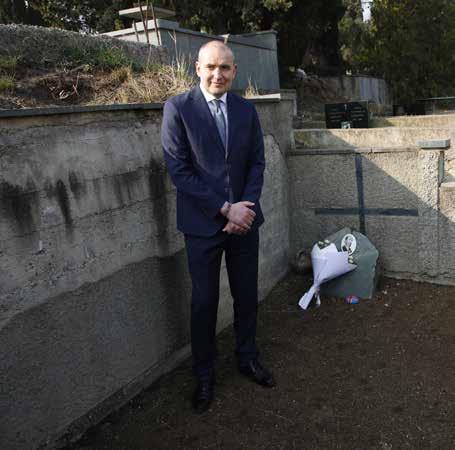
During the visit to Georgia, Guðni Th. Johannesson, the president of Iceland, made his way to visit the resting place of Grigol Matchavariani in the capital Tiblisi. Mr. Matchavariani was a personal friend of President Johannesson, and moreover, a deeply devoted enthusiast of Icelandic language and literature.
In the fall of 1992, a letter appeared on the readers’ column of Iceland’s oldest and most widely circulated newspaper, Morgunbladid. While such letters were commonplace, this one gathered considerable attention nationwide. Readers noticed approvingly the beautiful use of the Icelandic language in the text of the letter but were at the same time quite flummoxed to see that the sender was in fact an individual in the former Soviet Republic of Georgia. In his letter the man expressed great admiration for Iceland, the Icelandic language, the ancient Sagas and more.
As it turned out, the letter was sent by the said Georgian at the suggestion of President Johannesson, then a student in England. Around that time, President
Johannesson’s female schoolmate told him about her compatriot, Grigol Matchavariani by name, who not only had a deep interest in all things Icelandic, but actually spoke Icelandic – an exceedingly difficult language to master by any measure – having taught himself by reading old Icelandic books. The Icelandic student and future president was duly impressed.
Thus, the Icelandic student in England and his friend from Georgia came to know each other. The letter that appeared in the readers’ column of Morgunbladid, prompted the Icelandic Prime Minister at the time, Davíð Oddsson, to invite Grigol and his wife Irma to Iceland in December 1992. The couple was only too happy to accept.
As it turned out, Grigol not only wrote excellent Icelandic, but also spoke the language fluently. Having learned the language from ancient writings, his vocabulary was accordingly graceful, if slightly antiquated. There may not have been a local person who spoke Icelandic
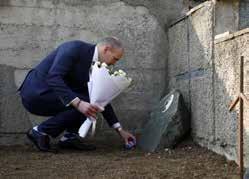
Mr. Jóhannesson places flowers and an Icelandic pebble, painted in the colours of the Icelandic flag, on the grave of his friend, and Iceland‘s friend, Grigol Matchavariani.
as beautifully as Grigol did, and in such a casual, effortless manner.
Grigol Matchavariani died following a car accident in Georgia in the spring of 1996, much to the sorrow of the Icelandic people who had come to admire this true friend of their country. Following his death, his wife Irma and daughter Tamar moved to Iceland. Almost 30 years later, the people of Iceland still cherish the memory of the Georgian who so dearly loved Iceland and the Icelandic language.
www.icelandictimes.com 9
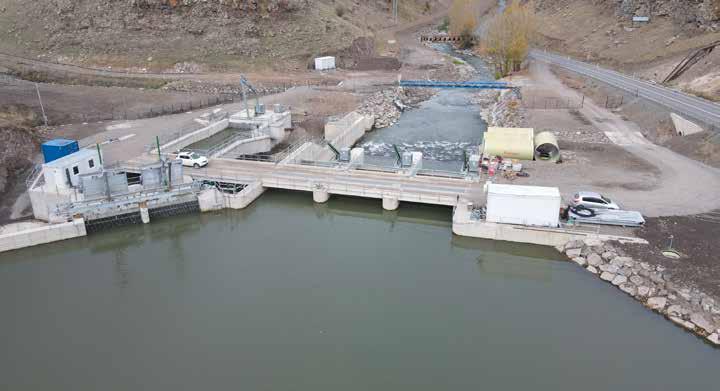
VERKÍS:
ICELANDIC EXPERTISE IN FOREIGN MARKETS
Sveinn Ingi Ólafsson, engineer at Verkís Engineering & Consulting, was among the representatives of the Icelandic business delegation that visited Georgia last March during the official visit of the President of Iceland. Sveinn Ingi, who served as Verkís’ managing director from 2008 to 2021, is still involved in various projects, including overseeing Verkís’ operations in Tbilisi.
The purpose of the business delegation’s visit was to explore opportunities for increased collaboration related to renewable energy development and green solutions. Specifically, the focus was on geothermal energy, climate-friendly investments, and hydropower projects. Verkís has been working on projects in Georgia for several years, dating back to 2008, as Sveinn explains, with many of these projects related to hydropower utilisation.
“Georgia is rich in water resources, thanks to the Caucasus Mountains forming the northern border of the country,” says Sveinn. “Formerly part of the Soviet Union, Georgia has a long and colourful history. Its people are proud of their culinary traditions and winemaking,” he adds.
According to Sveinn, Verkís’ projects in Georgia often involve collaboration with Landsvirkjun Power (LVP), a subsidiary of Landsvirkjun, the national power company of Iceland. "In the early consulting projects, LVP and Verkís brought in experts with
decades of experience in developing hydropower projects in Iceland. In Georgia, there was a significant need for engineers with expertise in hydropower since during Soviet times, most of that expertise came from Russia. However, after the Russian invasion of Georgia in 2008, that collaboration was obviously no longer feasible."
Aiming to Increase the Share of Renewable Energy
Verkís’ partners in Georgia primarily consist of companies and funds interested in investing in hydropower projects.
However, the country’s authorities are aiming to increase the share of renewable energy in electricity production. Currently, most of the energy for electricity generation comes from hydropower and natural gas, but in recent times, wind and solar energy projects have also been added.
“The procedure for utilizing hydropower involves the government issuing some form of research permit for interested parties during public tenders. The licensee then conducts feasibility studies and subsequently decides whether to proceed with the projects,” explains Sveinn Ingi. "Many of Verkís’ projects in Georgia have

www.icelandictimes.com 10
The Icelandic Business Delegation with the President of Iceland in Georgia. Sveinn Ingi is second from right in the photo.
focused on pre-assessing hydropower developments, including environmental assessments and geological surveys. Verkís has also provided full design services during the construction phase of power plants. The largest project of this kind was the Dariali hydropower plant, which has a capacity of approximately 100 MW. The latest example is the Akhalkalaki plant, with a capacity of around 20 MW, visiting which was a highlight during the official visit of the President of Iceland in March."
Challenges in a new environment
It is worth noting in this context that the Akhalkalaki project has a unique position, as LVP and Verkís conducted a feasibility study for their share in the company that owned the project. When the feasibility study indicated that the project would be profitable, LVP decided to invest in the project, acquiring a minority stake in the power plant, while Verkís retained a smaller share. “The benefit of working on projects in other countries than Iceland lies primarily in facing new challenges associated with a different environment and learning how other countries approach energy production. This, in turn, broadens perspectives and experience.”
Sveinn Ingi further points out that the official visit of the president to Georgia has drawn attention from authorities there due to the significant experience Verkís and LVP have gained from hydropower projects in Georgia. “Participants in the trip received information about the government’s future plans in energy matters and met with numerous influential figures in the energy sector. Such connections contribute to ongoing project research in the country,” says Sveinn.
Consulting projects worldwide
According to Sveinn, Verkís also owns subsidiary companies in Norway and Greenland providing general engineering services in those regions using their own staff, often collaborating with Verkís in Iceland. Additionally, the company has worked on consulting projects related to geothermal utilisation globally over several decades. “These projects have varied in nature and have been carried out for various stakeholders,” says Sveinn.




Business Development and Innovation
Landsvirkjun, Gudlaugur Thór Thórdarson, Minister for the Environment and Natural Resources of Iceland, and Hrannar Björn Arnarsson, Consul of Georgia in Iceland.
Photo/Landsvirkjun & collaborators.
“Development banks like the World Bank Group often purchase specialized consulting services in this field, as do the governments of countries interested in harnessing geothermal energy and investing in geothermal power plants.”
Currently, Verkís is acting as a consultant for the owner of a 35 MW geothermal power plant in Menengai, Kenya. Verkís serves as the so-called “Owners Engineer” and oversees all design aspects while monitoring the construction process, including equipment installation and plant construction. “Here, as elsewhere, Verkís draws on its extensive experience accumulated from developing geothermal power plants back home in Iceland,” says Sveinn Ingi.
Verkís is currently involved in numerous large-scale projects, including new developments and maintenance at Keflavík International Airport, the Norðurál Aluminium Smelter, Hvammsvirkjun Power Plant, Svartsengi Geothermal Power Plant expansion and enhancements to existing operations, energy transmission projects, district heating systems, transportation infrastructure, and more. “Internationally, there is continued interest in projects related to renewable energy and energy transition,” Sveinn points out. “One notable example is Project Gamma, where innovative solutions for energy transition are being developed and tested through modifications to a transport vessel during operation.”
www.icelandictimes.com 11
The massive engine room of the Akhalkakali Hydropower Station
The Hydropower Station Exterior.
From left: Sveinn Ingi, Helgi Hjörvar of the business delegation, Ríkarður Ríkarðsson EVP of
at
Aerial view of the water intake building.
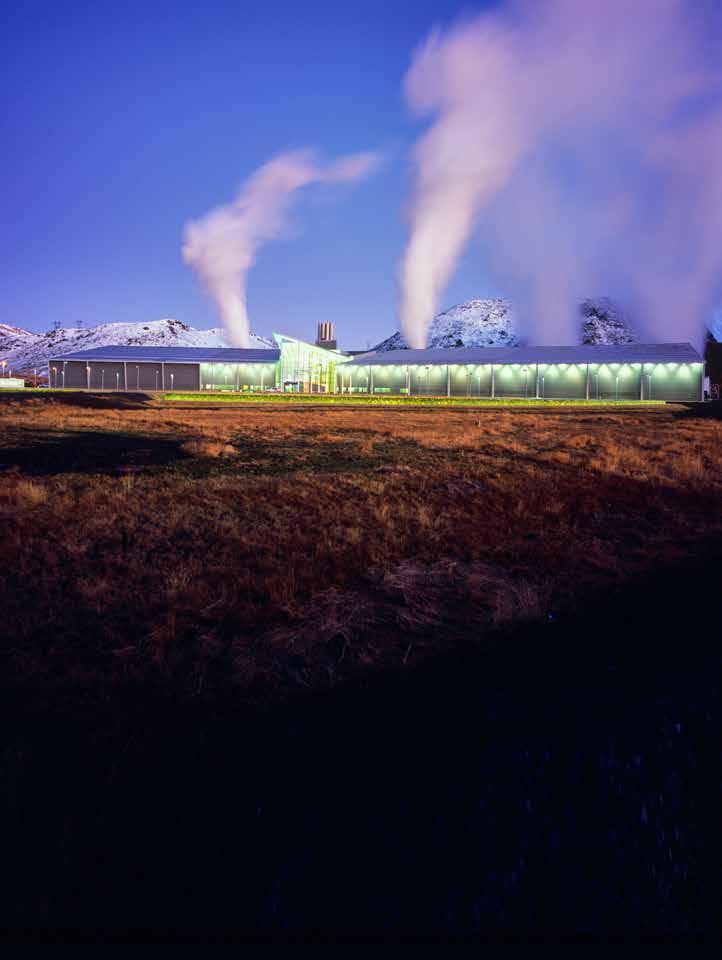
REYKJAVÍK ENERGY LOOKS TO THE FUTURE
Sævar Freyr Þráinsson, CEO of Reykjavík Energy, anticipates tremendous opportunities in energy production in Iceland. According to the company’s new and ambitious strategy for the future, green energy production clearly needs increasing, and plans for wide-ranging and enthusiastic collaboration are already in place with innovative companies in the energy sector —in the coming years and decades.

Sævar Freyr Þráinsson
www.icelandictimes.com 12
The recent annual meeting of Reykjavík Energy was titled ‘Clear Opportunities’, which, according to Sæva r is a wordplay that reflects the goals that Reykjavík Energy aims to achieve for the future. ‘Clear refers to pure, green energy, which we seek to enhance in various ways, while the opportunities we discuss are those that benefit our society and the positive impact we, as a company, can have,’ explains Sævar. ‘In essence, our vision for the future is simple: We are a catalyst for a sustainable future. Each word carries great significance and meaning for us. We strive for purpose in everything we do and base our actions on this perspective.’
No shortage of opportunities
‘One of the things we’re working on, not just here in Iceland but globally, is combating global warming. Iceland has committed to participating in the project to fight global warming by reducing the Earth’s temperature by one and a half degrees,’ says Sævar. ‘The world aims to triple the amount of green energy by 2030 and double energy efficiency at the same time. We’ve already analysed the role Reykjavík Energy will play in this project and are working toward these goals. However, in some ways the current situation is a bit backwards. The reality is that we’re discussing an energy shortage in Iceland when we should be talking about opportunities.’
According to Sævar, we need to look at the possibilities differently and place them in a different context. Where do we want to be in 10 or 15 years? ‘To achieve our goals, we definitely need to produce sufficient green energy. When I say green energy, I’m referring to both electricity and our geothermal energy. We must increase and improve both to move beyond the current situation of discussing an energy shortage. That’s why we’re emphasising significant increase in energy production. Once we’ve addressed the energy shortage, we still need to tackle what’s known as energy transition. It’s actually our most critical task right now and is part of the global journey to transition away from polluting fossil fuels. Iceland has made considerable progress in this area compared to other nations, with

our geothermal resources and more, but we still need to take further action. We must harness our hot water and produce enough green energy to truly solve the energy transition challenge.’
The ‘Current Shift’ that lies ahead
Having said that, only half the story is told, Sævar points out. ‘But then we have the opportunities ahead. We call them the ‘Current Shift’, as the word current refers to these issues being highly current, and it is also a term that refers to the flow of electricity. The energy shortage, energy transition, and current shift––these are just terms for the opportunities we’re observing, and discussions are already underway with many of the most interesting innovative and creative startups in this field. At the same time, we’re facing some of the most exciting business opportunities Iceland has ever seen.’
Sævar explains that the reason these opportunities are emerging is due to an unprecedented transformation occurring
globally. ‘A transformation that stipulates that merely capturing carbon dioxide from the atmosphere, and simultaneously having production processes that are polluting is insufficient action. Instead, we need to transform production methods so that they become clean. We’re currently in discussions with exciting collaborators in this field that have been developing new technology to transform the production processes themselves. This will lead to green production methods, and ultimately, these companies are determined not to compromise their success by purchasing energy that is not generated in an environmentally friendly manner.’
The world is undergoing a significant transformation, according to Sævar, and this needs to happen in the next few decades. With its abundant green energy, Iceland is in an excellent position to benefit from resulting business opportunities, attract them to the country, and create an environment, with subsequent job opportunities, that the Icelandic society
www.icelandictimes.com 13
Reykjavík Energy Headquarters, and a future hub for energy startups and innovators.
can be immensely proud of. ‘Reykjavík Energy intends to use its vision for the future—being a catalyst for a sustainable future—to seize these possibilities, which is why we call them clear opportunities. Because this is what we see ahead.’
‘But our priorities also revolve around balance. Balance in environmental protection, biodiversity, climate protection, financial risk management, community development, employment, municipalities, the economy, with our partners, and for our customers. We need to proceed with enthusiasm but also with responsibility,’ says Sævar. ‘Iceland’s commitment to sustainable energy and innovative solutions is commendable, and it’s exciting to see how these efforts will shape the future.’
The future of energy
According to Sævar, the most urgent projects and biggest opportunities that lie ahead for Reykjavík Energy revolve around harnessing new sources of energy.
‘Our role is to be an energy company and a utility company, as well as being involved in carbon sequestration, so we cover all
aspects of the process, so to speak. When all of this comes together, we can work with precision and effectiveness on the opportunities at hand.’
Reykjavík Energy is fully committed to this endeavour. ‘In this company, there is immense expertise and capability in geothermal energy, and we are exploring all opportunities and possibilities in this field. But equally important is examining other ways to produce green energy for the future––such as wind power, solar energy, and wave energy. Across all these categories, we are working at various stages, from initial research to collaboration with partners where opportunities can evolve into actual production. And we are looking at new capabilities that may not currently exist within our organisation.’
When it comes to wind energy, Reykjavík Energy is exploring areas in Iceland that have already been subjected to some disturbance. ‘In these sites, we want to install wind turbines and are conducting measurements in these areas. According to initial data, we have very promising opportunities for energy production. At the

same time, we are exploring collaboration with other parties regarding wind energy, which could lead us to take further steps in that field.’
There is also the potential for collaboration with companies to harness solar energy. ‘At a recent meeting, it was announced that we are considering collaboration with a company called Transition Labs, which, in turn, collaborates with Space Solar. They aim to generate solar energy in space, where sunlight is 13 times stronger than the light that reaches the Earth’s surface, resulting in more powerful electricity.’ Sævar explains, ‘The accumulated energy would then be transmitted back to Earth via radio waves towards the necessary locations. This work is still in the research stage and will likely take decades, but we are actively participating with key stakeholders.’
Sævar adds that Reykjavík Energy is also embarking on a research project regarding tidal energy, which is slightly less developed than wind and solar energy. ‘However, in the coming years or decades, this research will hopefully reveal the

Tourism , C ulT ure and B usiness issue 53 • 2024 www.icelandictimes.com 14
Nesjavellir Geothermal Power Station is the second-largest geothermal power station in Iceland.
Once the beginning of electrification in Reykjavík, Ellidar Station is now a popular destination for locals and tourists alike.
Sævar points out that efforts are underway to bring together all five subsidiaries of the conglomerate—besides Reykjavík Energy, these include Orka náttúrunnar, Veitur, Carbfix, and Reykjavik Fibre Network —under one roof at the headquarters near Bæjarháls, Reykjavik.
feasibility of harnessing and utilising tidal energy in the long run.’
Sævar is adamant that collaboration is a prerequisite for progress in the energy sector. ‘It will manifest in various ways, including our collaboration with partners who possess expertise and knowledge that we currently lack. Thus, in a highly strategic manner, we will build up this expertise within Reykjavík Energy. Similarly, we envision that the energy sector can evolve in unique ways, similar to what has occurred in the maritime industry where additional value lies
in the natural resources we are already utilising—whether it’s in cold water, hot water, wastewater, and so forth—that we have yet to find ways to harness and utilise. Our goal is to achieve this not by doing everything ourselves, but by finding the right collaborative partners to contribute to the realisation of positive outcomes. In this way, again, we aim to be a catalyst of a sustainable future. Who knows, perhaps collaboration with innovative companies will yield new resources before long— something that no one has yet fully realised? As an example, consider the

fat produced in wastewater, just like the enzymes in cod roe, which unexpectedly became significant assets as material for bandages intended for burns.’
A new energy hub in the making Sævar points out that efforts are underway to bring together all five subsidiaries of the conglomerate—besides Reykjavík Energy, these include Orka náttúrunnar, Veitur, Carbfix, and Reykjavik Fibre Network— under one roof at the headquarters near Bæjarháls, Reykjavik. However, according to Sævar, once the reunion is complete, the building is nevertheless still too big for Reykjavík Energy alone.
‘We want to utilise the available space to attract the most powerful innovators and startups and subsequently achieve results by researching the resources and harnessing the potential value that may lie within them. We intend to create an environment here in this building—a hub for pioneers and innovation—where such entities can thrive. In doing so, we also contribute to our strategic goal of being a catalyst for a sustainable future.’
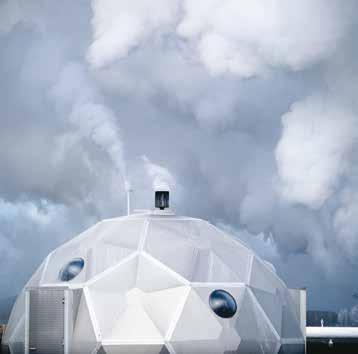
www.icelandictimes.com 15
The geothermal energy seething under a Reykjavík Energy borehole at Hellisheidarvirkjun Power Plant.
Gvendarbrunnar, a water source for the people of Reykjavík since 1909, provides almost 1 in 2 Icelanders with drinking water.
80 YEARS OF ENERGY IN ICELAND

08years ago, in 1944, when Iceland became an independent nation, coal dominated the country’s energy landscape, accounting for 70% of total energy consumption, as reported by Statistics Iceland. However, the energy landscape has undergone remarkable transformations since then. Today, the situation is vastly different. Coal now represents a mere 0.01% of energy usage. Meanwhile, geothermal energy has surged to constitute 70% of the nation’s energy consumption. In 1944, geothermal energy contributed only about 15% of our energy usage. Over these 8 decades, other energy sources have also evolved: Hydropower has seen significant growth, increasing from 3% to nearly onefifth of the energy mix. Oil, despite the increased use of boats and cars, has declined from 15% to approximately 10%. Around 1960, during the peak of oil consumption, it accounted for 65% of the country’s energy usage. Today, thanks to the combined contributions of geothermal and hydropower, approximately

90% of the energy used by locals comes from domestic green sources—either extracted from the earth or generated through hydropower plants. Photo & text: Páll Stefánsson.

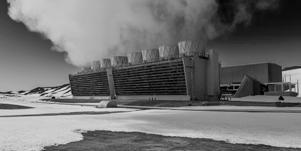
www.icelandictimes.com 16
Búrfell Hydropower Station is located in Thjórsá, Iceland's longest running river. The exterior of the building—in operation since 1969—is adorned with decorations by artist Sigurjón Ólafsson.
Krafla Geothermal Power Plant, near Lake Mývatn, came into use in 1977.
Reykjanes Power Plant, at the South-Western tip of Reykjanes Peninsula, in operation since 2006.

 Svartsengi við Grindavík, en byrjað var að byggja orkuverið 1976.
The Hellisheidi Geothermal Plant has been in operation since 2006.
Svartsengi við Grindavík, en byrjað var að byggja orkuverið 1976.
The Hellisheidi Geothermal Plant has been in operation since 2006.
GEOTHERMAL EXHIBITION:
Embracing Resource Circulation
At ON Power’s Hellisheidi Power Plant, various entities operate with sustainability as the guiding principle. The Geothermal Exhibition in the main building presents visitors with a new perspective on multifaceted value creation and resource circulation. The forces of nature play a central role, presented to the audience in vivid, interactive fashion.
Sustainability at the Centre
The surroundings of the Hellisheidi Geothermal Power Plant are quite aweinspiring, varying dramatically with the weather each day. The striking architecture and alien-looking equipment outdoors appear almost like something from science fiction, and when the backdrop of moss-covered mountains is added, these contrasting elements create an impressive tableau.
“All the structures at Hellisheidi Geothermal Power Plant house activities that, in one way or another, aim to utilise the area’s geothermal resources in a natural and sustainable manner,” says Laufey Guðmundsdóttir, the director of the Geothermal Exhibition at the Hellisheidi Power Plant. "Everything we do is geared toward ensuring that our operations leave the land in at least as good condition as it was in before utilisation.”
In the Geothermal Exhibition, the natural water cycle and the path of hot
water from boreholes to homes, along with other aspects of the operation, come to life for visitors. In one designated and enclosed space, both art and science converge in a way, offering a unique 14-minute experience through captivating video footage captured by drones, accompanied by soothing music and the subtle hint of an exclusively made scent called “Agndofa,” creating an enchanting ambiance.
The exhibition staff, also known as Science Communicators, expertly guide visitors through the wonders of geothermal energy. Among them are geologists, resource specialists, and environmental scientists who are well-versed in the subject matter.
Resource Circulation and Geothermal Utilization
The Hellisheidi Geothermal Power Plant is one of the largest of its kind in the world, and the Geothermal Exhibition sheds light on various aspects of its operation— from the very extraction of hot water deep within the earth to its delivery all the way to end-users. The exhibition educates visitors interactively and informatively about how geothermal energy is harnessed to generate electricity for the country and provide hot water for the capital area.
Several other entities operate alongside the Hellisheidi Power Plant within the ON Geothermal Park. Notably, there’s the trailblazing startup Carbfix, a leader in


combating climate change by transforming CO2 into rock formations. Also within sight from the power plant, an organisation called Climeworks has facilities at the forefront of global efforts to capture CO2 from the atmosphere. Finally, VAXA Technologies has a presence in the ON Geothermal Park, where they cultivate microalgae and produce, among other things, vitamins.
Despite the abundant natural resources in the Hengill area, all the companies operating there are acutely aware that they must tread carefully and respect the environment. Balancing water and energy utilisation is crucial to ensure a sustainable future. “We need to treat these resources as well as we can, not only directly through our operations but also by thinking beyond them. That includes substantial reforestation efforts,” explains Laufey. "Endless extraction is not sustainable; we must give back in return.”
Behind Every Detail—A Reason
Just as the utilisation of the area’s resources is carefully planned to efficiently harness the geothermal energy of the region, the main building of the Hellisheidi Geothermal Power Plant is a deliberately designed structure. The roof of the power plant and the roof of the exhibition space lean toward each other, imitating the intersection of tectonic plates where Iceland lies. But that’s not all—the distinctive shape of the glass dome in the exhibition space, as well as the pattern in the paving stones in front of the building,
Tourism , C ulT ure and B usiness issue 53 • 2024
Laufey Guðmundsdóttir
points at Snæfellsjökull glacier, which is by many considered one of the world’s seven major power centres. Thoughtful design prevails wherever one looks; no aspect of the architecture is left to chance. Various architectural elements in the main building directly reference features such as tectonic boundaries, geological layers, and other environmental factors which collectively contribute to the presence of geothermal heat beneath the Hellisheidi Geothermal Power Plant.
Otherworldly, Everchanging View
The view from the exhibition space is at once magnificent and variable, according to Laufey. “Some days, the surroundings are shrouded in mysterious fog, while at other times, everything is covered in snow, creating a truly enchanting scene. In clear weather, the mountain peaks stretch out under the blue sky as far as the eye can see, almost completing a full circle.”
Today, the sky is overcast, and fine mist hangs in the air. The green moss appears to glow vividly, covering both lava fields and nearby mountains.
First Stop on the Golden Circle
Increasingly, visitors exploring the Golden Circle make the Geothermal Exhibition their first stop to witness the power and marvels of geothermal water in Iceland. This choice is fitting enough because water and Iceland’s geology are the common thread connecting the sites that form the aforementioned circle: the tectonic boundaries, Öxarárfoss waterfall, the Silfra fissure, and the iconic Thingvallavatn Lake at Thingvellir; the unique and impressive Gullfoss waterfall; and finally, the geothermal heat that propels hot water dozens of meters into the air in the Geysir area. It’s all interconnected and situated in the same part of the country as well.
“We are indeed fortunate to have at our disposal this remarkable educational hub in geology, which Iceland represents. Starting a journey through this unique region here on Hellisheidi is an obvious and natural choice,” says Laufey.

Jarðhitasýning ON
Hellisheiðarvirkjun
Phone 591-2880
syning@on.is
www.on.is/en/geothermal-exhibition/






www.icelandictimes.com 19
NO CREATIVE IS AS ORIGINAL AS HE THINKS HE IS
Guðmundur Oddur Magnússon— known as Goddur—is among the most renowned and experienced graphic designers in Iceland, with a storied career both as a de-signer and a professor of graphic design at the Iceland University of the Arts. Cur-rently, he is working on documenting the journey of his own profession—specifically, the use of multiplied visual language in Icelandic print media, as he puts it. It’s a fitting occasion to delve into a selection from his design oeuvre, which spans several decades.
Goddur retired from his position as a professor of visual communication at Iceland University of the Arts four years ago, but he still teaches there, as he still enjoys it. Says Goddur, “the current arrangement suits me well, allowing me more time for creative work and research, doing what I find enjoyable. I must say I have zero patience for meetings or bureaucratic paperwork.”
Although his own design journey is long and fruitful, Goddur claims not to see it as dis-tinct phases when looking back. Nevertheless, he acknowledges certain influences when it comes to visual presentation. “The influencers are several, and they make their impact through record sleeves and magazines that only discerning artists pay attention to. Subsequently, within five to ten years, these conceptual ideas become widespread and what we call ‘mainstream.’ My creative vision primarily emerged during the years from 1980 onwards, into the first decades of the new century. It was a time of significant transformations, what with the

Tourism , C ulT ure and B usiness issue 53 • 2024 www.icelandictimes.com 20
Guðmundur Oddur Magnússon
digital revolution. Also, during this time, we stopped referring to our profession as advertising illustration and started calling it graphic de-sign.”
He also points out that everyone inevitably draws inspiration from their contemporar-ies. "We are all born into the zeitgeist and our place in the world. No one in creative fields is as original as they believe themselves to be. While ideas cannot be copyright-ed, copyright is based on execution—how one carries out their own stylistic expres-sions of an idea."
To Be Content with What One Does
Goddur himself hasn’t worked at an advertising agency since returning to Iceland from his studies on the west coast of Canada in 1990 at Emily Carr University in Vancouver B.C. Instead, he quickly started teaching and has been working independently along-side his teaching ever since. But is he particularly pleased with any specific projects he has worked on— something that, in his opinion, stands out from his body of creative work?
"I personally choose projects related to aspects of cultural life: museums, galleries, concerts, albums, lectures, and so on. It means having full authority to create works that one is personally satisfied with. My profession is, of course, a serviceoriented field, but there’s a significant difference between service and servitude. What’s most important is to be content with what one does. There are no specific standouts when it comes to my work— except perhaps in the eyes of others."
Which seems a foregone conclusion as his work has been published in numerous books on graphic design, such as; 55°North: Contemporary Scandinavian Graphic Design published by Laurence King, London (2002), Graphic Design for the 21st Century (2003) and Graphic Design NOW, by TASCHEN (2003), North by North, Scandinavian Graphic Design, Die Gestalten, Berlin (2002), ROMANTIK, Die Gestal-ten, Berlin (2004), Randscharf On the cutting Edge: Design in Iceland, Die Gestalten (2011), TRANSFORME, V.I.A., Paris (2004), and Scandinavian Design Beyond the Myth, Arvinius Förlag (2003), to name a few.
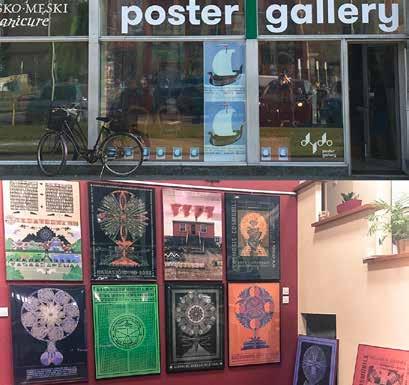
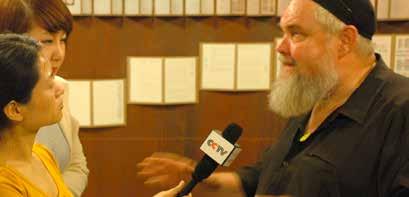

www.icelandictimes.com 21



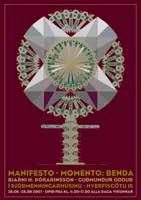
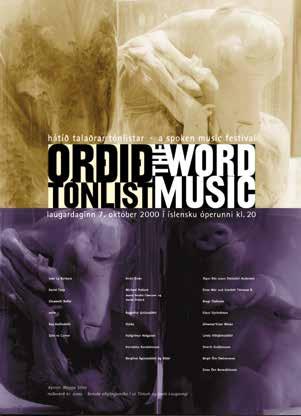



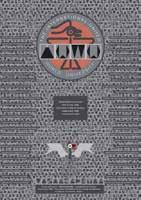
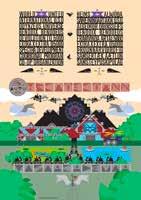


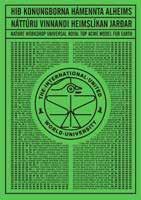
Tourism , C ulT ure and B usiness issue 53 • 2024 www.icelandictimes.com 22










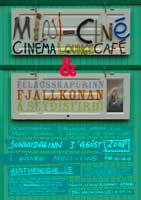




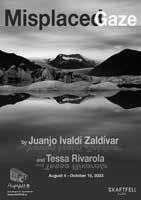
www.icelandictimes.com 23
Commerce between Iceland and Russia CONTINUOUS TRADE SINCE 1953
Icelanders expanded their fisheries jurisdiction from three miles to four on 15 May 1952. As a consequence, fishing operators in Grimsby and Hull prohibited Icelandic ships to unload their catch. Discussions between officials from both countries were taken up in London but these produced no results.
Tremendous interests were at stake because at the time, 80% of the wetfish catch went to the British market. A quick response was needed and it was decided to increase production of stockfish, saltfish and frozen fish but it was clear that this would not be enough. New markets would have to be found. Eventually, Iceland approached the Soviet Union; some commerce had taken place between the countries a few years earlier but this had come to a stop.
In the summer of 1953, trade discussions began between Icelandic and Soviet officials and an agreement was signed on 1 August. Bjarni Benediktsson, minister for foreign affairs, said on this occasion that for a country with as one-sided production as Iceland, it was necessary to ensure access to markets in as many places as possible so that the country would not be dependent on just one nation when it came to commerce: “It is my hope that this new position of the Soviet Union is an omen that relations between the countries will improve, not only as regards commercial interests but also other world affairs”.
MOSKVITCH, VOLGA AND GAZ 69
According to the agreement from 1953, the Soviet Union would in particular purchase herring and frozen fish, and in return, Iceland would buy various products from the Soviets, especially oil. For a while, all imported fuel was from the Soviet Union (whether it was sold under the brand
name Shell, Esso or BP). In exchange for seafood products, Icelanders also received reinforcement steel, timber and other construction products. Furthermore, bran was purchased from Russia, as well as rye and potato flour. Purchases were negotiated which met the annual needs of Icelanders for these products.
The trade continued over the next years and it was not long before Soviet vehicles became a common sight on the roads of the country. First there was Pobeda, then Moskvitch, Volga and GAZ 69, which was always called “Rússajeppi” (Russia Jeep) in Iceland, and was popular all over the country. The Soviets did not only purchase fish from Iceland, though, but also tinned goods and wool products. Exports to the Soviet Union amounted to 12.6% of total exports in 1953 and went up to 15.2% the next year. This trade was of vital importance to the national economy during those years.
The trade with Russia caused people within NATO to worry. Some even thought that Iceland was falling into the arms of the Soviets and Britain was criticised for behaving harshly towards the Icelanders. Ólafur Thors was appointed prime minister in September 1953. He is once to have said that as a rule he never assumed people to be malicious unless he witnessed such behaviour from them. Iceland never let the assistance of the Soviets influence the country’s foreign policy and certainly the Icelandic products were very well received in the Soviet Union.
AMBASSADOR WITH A PERMANENT RESIDENCE
The trade agreement strengthened the countries’ diplomatic relations and it was decided that Iceland’s ambassador in the Soviet Union would henceforth have a permanent residence in Moscow; for example, to facilitate the implementation
of the trade agreement and prepare for its renewal. Over the next decades, the Icelandic embassy in Moscow had the unique position among Icelandic embassies that most of the operation consisted in looking after the commercial interests of Iceland.
The trade agreements between the nations were usually valid for four years and export companies in each country then concluded sales agreements with parties on both sides. The Icelandic embassy in Moscow played a key role here. If the Icelandic companies believed, for example, that oil and gasoline were being dispatched less readily than what had been agreed upon, it was the role of the embassy to put pressure on the Soviet companies and the same applied when Soviet importers complained that provisions in agreements concerning fulfilment and quality were not being adhered to. Complaints were never made in regard to wool products, but unfortunately it was too common for quality control to be relaxed when it came to seafood products sent to the Russian market and this of course negatively impacted Iceland in negotiations. Some Icelandic manufacturers did not seem to realise that the Soviet market was one of the best for Icelandic seafood products, as the Russians paid a higher price than was generally available in the world market. By the same token, they demanded highquality products.
CLEARING TRADE ABANDONED
Immense oil price hikes in the early seventies led to a high trade deficit between Iceland and the Soviet Union, to the disadvantage of Iceland; the oil was purchased at the global market price minus discount percentages which the Soviets granted to the Icelanders as an old and valued customer. Eventually, Ólafur Jóhannesson, minister for trade and justice, traveled to Moscow in the fall of 1974 to meet with Nikolai S. Patolichev, the Soviet Union’s minister for foreign trade affairs. Their discussions were successful as the Soviet Union agreed to purchase greater amounts of seafood products from Iceland to lower the trade deficit and the Icelanders agreed with the Soviets on a higher credit
Tourism , C ulT ure and B usiness issue 53 • 2024 www.icelandictimes.com 24
limit, loan and currency payments to cover the remainder of an account debt resulting from the trade deficit.
Ever since 1953 and into the mid-seventies, clearing trade had been conducted between the nations, but at this point in time, Vneshtorgbank, the foreign trade bank of the Soviet Union, made it a condition for solving the payment difficulties of the Icelanders that the clearing trade arrangement be abolished. The Icelandic representatives were not pleased with this and leaders in the fishing industry feared that without fixed quotas, the export of seafood products to the Soviet Union might be reduced.
A strange situation had thus emerged; that is, the Soviets had become proponents of free international trade but Icelandic capitalists were in favour of no change and continued clearing trade! The Soviets got what they wanted and as of 1 January 1976, all trade between the countries was conducted in a free, exchangeable currency. Exports to the Soviet Union increased during those years and amounted to 10.6% of total exports in 1975.
Hannes Jónsson was the ambassador in Moscow at the time and attended diligently to Iceland’s trade affairs. In 1975, Einar Ágústsson, minister for foreign affairs, traveled on a visit to Moscow, the first public visit to the country by an Icelandic minister for foreign affairs, and two years later, Geir Hallgrímsson became the first Icelandic prime minister to go on a public visit to the Soviet Union.
PAINT FOR THE ANNIVERSARY OF THE RUSSIAN REVOLUTION
Paint was among the products exported to the Soviet Union and, to name an example, in 1979 the paint manufacturer Harpa sold 4,000 barrels of paint to the country. Exports consisted almost entirely of white paint, except for when in 1967, a considerable amount of paint was ordered in more colours because of the anniversary of the Russian Revolution in that year; the paint was used to make immense posters for celebrating the anniversary! Furthermore, Harpa sold quite a lot of black car paint to the Soviet Union. Harpa worked for three to four months a year on the export

production and as regards quantity, it amounted to half of the overall production of Harpa. With this trade, Harpa managed to acquire currency to finance all raw material purchases for the production.
Magnús Helgason, general manager of Harpa, communicated with the Soviet Union because of his seat on the trade committee of the countries and he took the initiative in starting discussions with the Soviet Union’s minister for sports, who was in Iceland to attend the World Chess Championship in 1972, regarding whether the Soviet Union could provide a good coach for the soccer club Valur; Magnús was always a great supporter of the club. This came to pass and Youri Illitchev was hired as the coach of Valur. It may be said that he laid the foundation for the success of the club in soccer tournaments in the next years. Thus, the trade between the countries led to good relations in other areas.
THE TRADE STRENGTHENS FRIENDSHIP
Here, only very few aspects of the trade history of the nations over the past 65 years have been mentioned, and certainly the trade changed radically upon the fall of the Soviet Union and thus the abolishment of a centrally planned economy.
Even though the two nations have not been confederates, the friendly sentiments of Soviet heads of state have been of much importance to Icelandic interests in past decades. The Soviets were among the first to recognise the establishment of a democracy in Iceland in 1944 and it made a great difference to the national economy
Landing of herring barrels from Iceland in area I of the Port of Leningrad. Leningrad, photo taken 04.05.1948
that a trade agreement was concluded between the nations in 1953 after the British prohibited Icelandic ships to unload their catch. That agreement was of much benefit to both countries. For the long term, the position of Iceland was strengthened following the ban on unloading. New markets were found and here the Soviet Union was of great importance. Iceland went on the offensive, new fish processing plants were built and great development took place in the freezing industry.
The Soviet Union was also of much support to Iceland in the country’s fishing disputes with the British and other European nations when the fisheries jurisdiction was expanded in 1958, 1972 and 1975. The trade strengthened relations in other areas and here, one could mention the agreement between the nations on cooperation in the areas of culture, science and technology from 1961 which greatly benefitted both Iceland and the Soviet Union.
In spite of different economic and social systems, relations were peacefully conducted for decades and in such a way that the leaders of the nations showed the utmost respect for each other and did not interfere in each others’ domestic affairs.
Texti: Björn Jón Bragason
Sources: “4000 tunnur af hvítu lakki til Sovétríkjanna” [4,000 barrels of white paint to the Soviet Union]. Frjáls verslun 1979. ― Guðni Th. Jóhannesson: Þorskastríðin þrjú. [The three cod wars.] ― Hannes Jónsson: Sendiherra á sagnabekk. [Ambassador tells tales.] ― Þorskastríðin. Fiskveiðideilur Íslendinga við erlendar þjóðir. [The cod wars. Fishing disputes of Iceland with foreign nations.] Collection of essays. ― Stories from the newspapers of the time period.
www.icelandictimes.com 25
THE ICELANDIC ART PRIZE
They were presented for the seventh time, at a ceremony in Iðnó by Tjörnin, The Icelandic Art Prize. Amanda Riffo was chosen visual artist of the year, for the exhibition House of Purkinje in the Museum of Contemporary Art. She is a French-Chilean visual artist who has been living in Iceland for the past 12 years. Brák Jónsdóttir received the incentive award for the exhibition Possible Reproduction in the Nordic House. Hreinn Friðfinnsson received an honorary recognition for his contribution to Icelandic art. He died a little over a week ago, aged 81. The most interesting reprint was Hilda Hákonardóttir’s exhibition, Rauður þráður at Kjarvalsstaðir. The joint exhibition of the year was Að rekja brot, in Gerðarsafn, Kópavogur, and then an award for published material related to art, the book Art can Heal: The Life and Work of Sigríður Björnsdóttir, by Ágústa Oddsdóttir. Of course Icelandic Times / Land & Saga was there. Photographs & text: Páll Stefánsson


Gjörningaklúppurinn did a performance of their own, as well as being the hosts of the event
Tourism , C ulT ure and B usiness issue 53 • 2024 www.icelandictimes.com 26
A piece by Hreinn Friðfinnson

Ólöf Kristín Sigurðardóttir, the director of The National Gallery of Iceland gave a speech about Hreinn Friðfinnsson


Ágústa Oddsdóttir accepts the award for the book of the year, from Ásdís Spanó, chairperson of the Visual Arts Council


Minister of
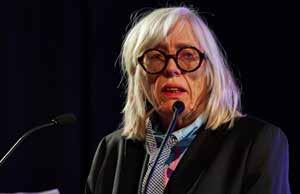


www.icelandictimes.com 27
Author Kristín Ómarsdóttir gave a powerful speech
Lilja Dögg Alfreðsdóttir,
Culture and Tourism, gives a speech
The incentive award being accepted by Brák Jónsdóttir
Neðra Breiðholt (Ljósmynd: https://reykjavik.is/)

JBREIÐHOLT
ust above Skógarsel street in Breiðholt is the farm mound of the farmstead of Breiðholt, from which the district draws its name. The oldest reliable documentation of Breiðholt dates from 1395, but it was probably founded somewhat earlier. A chapel stood there in pre-Reformation times, dedicated to St. Blaise/Blasius. In the early 20th century, human bones were unearthed on the farm, dating back to early Iceland.
At the Reformation in the 16th century, the farm became a royal property. The income of the estate went to support the clergy of the area. Breiðholt generally had no resident pastor.
The estate of Breiðholt had boundaries with the neighbouring farms of Vatnsendi, Hvammskot (Fífuhvammur), Digranes, Bústaðir, Ártún and Árbær.
In the early 18th century the estate supported two households: one comprised five people, who kept four cows, seven ewes, two ewe lambs, a winter-old whether, seven lambs and a colt three winters old. The other household comprised three people, with three cows, one milking heifer, a calf, three ewes, four lambs and a horse.
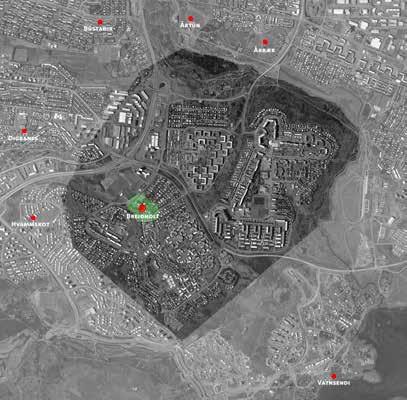
Tourism , C ulT ure and B usiness issue 53 • 2024 www.icelandictimes.com 28
In the late 19th century the Breiðholt estate supported about ten cows, 200 ewes and six to eight horses. The couple who lived on the farm at the time had 13 children. The farmers sold milk, butter and cream to Reykjavík people.
Warm springs farther down the grassfield were used for washing laundry. Breiðholt was a popular port of call: farmers from further east called at Breiðholt when they brought their sheep to the slaughter in autumn, and Reykjavík children made berry-picking expeditions.
In 1906 Reykjavík Town Council purchased the states of Breiðholt, Ártún and Árbær, in order to ensure access to Elliðaár rivers for the town's water supply. In 1923 Breiðholt was incorporated into the jurisdiction of Reykjavík. The old turf farmhouse was demolished in 1940, and replaced by a rendered wooden building. Farming continued at Breiðholt until the late 1950s.
In 1960 the owner of the Alaska plant nursery bought the estate, which was used for horticulture for many years. A barn became the nursery shop. The historic site of the Breiðholt farmhouse, church and churchyard was listed as a heritage site in 1981.
In the period 1960 - 80 new residential districts were developed on the former Breiðholt estate, which was in 2009 home to about 25.000 people.
Texti og myndir: Borgarsögusafn Reykjavíkur.

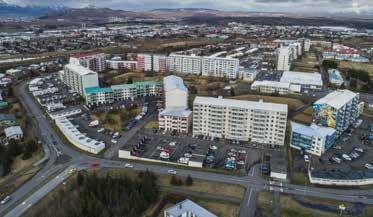



www.icelandictimes.com 29
Vegslóðar og vagnavegir 1909
Breiðholt 1916
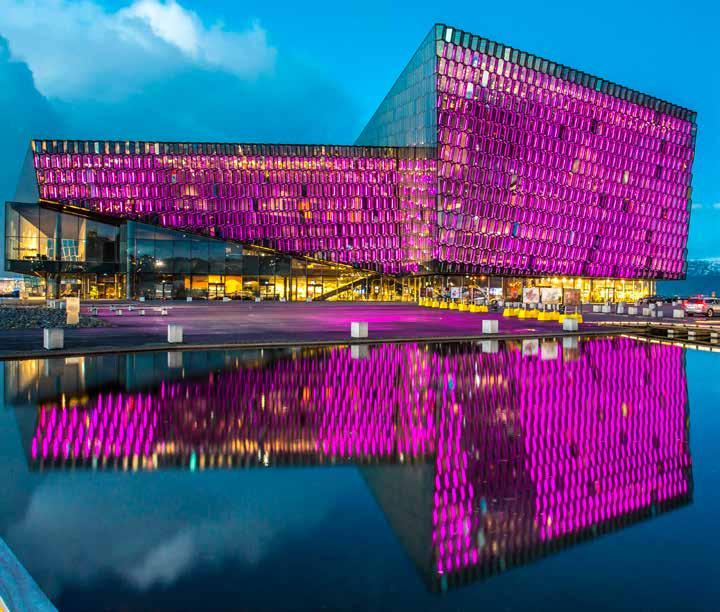
Culture is blooming at HARPA this Summer
More than just one of Reykjavík’s most striking landmarks, Harpa is a centre of cultural and social life in the very heart of the city, hosting a number of exciting events this summer – including Midday Music in Eldborg concerts, genuine club atmosphere, and memorable experiential exhibition inspired by Icelandic nature.
“We have two very exciting projects starting now in June,” says Hildur Ottesen Hauksdóttir, marketing manager of Harpa, about the upcoming summer. “Firstly, we are reviving the Midday Music concerts in Eldborg, while the other event is brand new—genuine club atmosphere in Norðurljós recital hall on Friday and Saturday nights.” According to Hildur, this is in response to great demand. “Our guests continuously show a significant and steady interest in experiencing Eldborg, our main hall, and want to hear live music there.” As for the club nights, they represent a response to the strong demand for concert venues in the city centre.

Tourism , C ulT ure and B usiness issue 53 • 2024 www.icelandictimes.com 30
Hildur Ottesen Hauksdóttir
Midday Music in Eldborg
At the lunchtime concerts, some of Iceland’s leading musicians will perform their favourite songs on Harpa’s grand stage with the majestic Eldborg hall as a backdrop. Here, spectators can enjoy a magical 30-minute music session at lunchtime, according to Hildur. “The audience can expect a mix of Icelandic pop classics and timeless international gems where they sit on stage in an intimate atmosphere, with beautiful song and the sounds from the exquisite Steinway grand piano in Eldborg.”
A summer evening in Harpa – Comedy & Live Music
“This project is actually a brand-new concept with series of stand-up comedy and live music in Harpa’s beautiful Norðurljós (Northern Lights) hallwhere guests,” says Hildur. “It’s a new stand-up and concert series on Friday and Saturday nights where there will be a genuine club atmosphere, both relaxed and fun. The hall will feature small round tables and chairs for guests and an open bar inside the auditorium. The evening starts off with a hilarious stand-up comedy show in English, followed by a live concert after the short intermission in between.
CIRCULEIGHT
– An innovative installation inspired by Icelandic nature Finally, Hildur points out the immersive installation CIRCULEIGHT, which encapsulates the elemental powers of Iceland’s landscape through the use of sophisticated visual communication technologies, engaging interactivity, and the mesmerizing compositions of musician Högni Egilsson of Hjaltalín and GusGus fame. “CIRCULEIGHT is an interactive installation, offering a family-friendly display that seeks inspiration from Iceland’s distinct and dynamic natural environment—from its volcanic lava and water bodies to its lush flora—thereby conveying the enthralling continuum of life. Visitors are invited to interact with the exhibit, influencing the art piece through gestural movements and ambulation within the space. Concurrently, the entrancing melodies composed by Högni Egilsson elevate the overall sensory experience.”

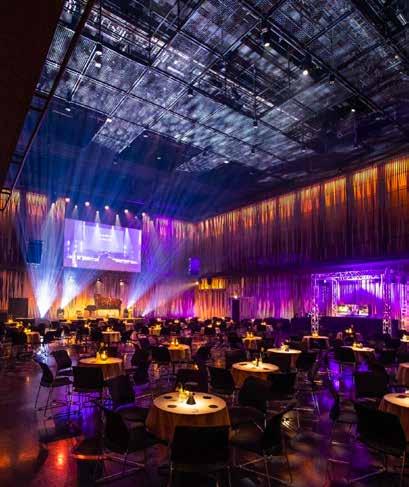
www.icelandictimes.com 31
Eldborg hall
Norðurljós

THE ICELANDIC PHALLOLOGICAL MUSEUM
Visit one of the most unique museums on the planet
The Icelandic Phallological Museum is one of the most unique museums in the world and one of the mostvisited in Reykjavík. The museum contains a collection of more than 300 penises belonging to every species of mammal found in Iceland and scores of foreign species. Visitors to the museum will see specimens belonging to whales, a rogue polar bear, seals and walruses, and specimens originating from many different kinds of land mammals. “The collection began in 1974 and it’s been constantly growing,” said Þórður O. Þórðarson, the manager of the museum. “We have well over 300 penis specimens and 300 penis themed art and cultural pieces.”
History of the museum
The founder, Sigurður Hjartarson, a historian and teacher, began this collection in 1974 when colleagues who worked at the nearby whaling station in West Iceland began giving him whale penises to tease him. The idea of collecting specimens from more mammalian species was born. Collecting the organs progressed and by 1980, he had collected 13 specimens, four from whales and nine from land mammals. In 1990 there were 34 specimens and, when the museum opened in Reykjavík in August 1997, the specimens totalled 62. In the Spring of 2004, the museum moved to the small fishing village of Húsavík, the whale watching capital of Europe.
It was moved back to Reykjavík in 2011 and opened under the direction of a new curator, Siguður’s son.
New and exciting location
“The first location in Reykjavík was great, but we had to relocate because the collection grew and the number of visitors grew as well,” said Þórður. “We are now located at Hafnartorg, which is a great area of Reykjavík near Harpa.” The museum has undergone extensive changes to improve the visitor experience. There is more space for guests to roam and view the specimens and the technology has been enhanced, with touch screens adding a modernized feel. Another exciting addition has been a phallus-themed bistro where locals and tourists can enjoy food, coffee and beers on tap from local breweries.
A visit to the Icelandic Phallological Museum is a unique, must-see experience when visiting Reykjavík. The museum, which is open every day from 10:00 – 19:00, is a great way to spend a couple of hours in the capital, and it will be a conversation piece for years to come! - JG

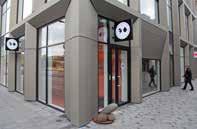




www.icelandictimes.com 32
561 6663
The Icelandic Phallological Museum Hafnartorg, 101 Reykjavík
+354
www.phallus.is
Anna María Design
The influence of the Icelandic nature
Anna María Sveinbjörnsdóttir is an Icelandic jeweller and designer who runs her own jewellery store, Anna María Design, on one of the main shopping streets in the city, Skólavörðustígur 3, in the heart of Reykjavík. Anna María studied both in Iceland and Denmark and has run her own company for more than three decades.
Anna María's design is pure, timeless and modern at the same time. She stresses exceptional attention to detail and craftmanship and has eye for the smallest detail.
The jewellery is both for women and men and encompass silver, gold, white gold, Icelandic stones as well as precious stones like diamonds. In the store, you can find one of the biggest selections of jewellery with Icelandic stones in the country like Agate, Mose-agate, Jasper, Basalt and Lava.
When it comes to emphasis and style, Anna María mentions free and organic forms based on the Icelandic nature. Iceland is surrounded by the Atlantic Ocean and its waves inspire the jeweller and much of her jewellery where you can see the forms of the waves on rings, necklaces, bracelets or ear-rings.
Filigree represents a delicate form of jewellery metalwork usually made in silver and is well known regarding the traditional Icelandic women's costume. In some of Anna María's designs you can find this extraordinary delicate work, which reminds one of the Icelandic heritage. -SJ

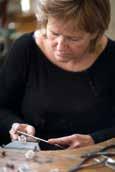

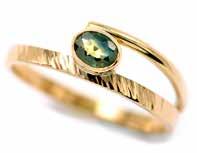

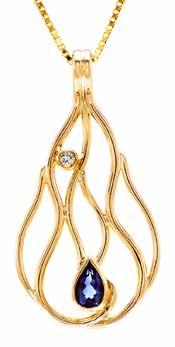
www.icelandictimes.com 33
101 Reykjavik +354 551 0036 annamaria@annamariadesign.is www.annamariadesign.is
Anna María Design Skólavörðustígur 3 •
64° Reykjavík Distillery: Quality Crafted Spirits
An independent distillery with unique spirits and liqueurs The spirits, which can be enjoyed in mixed drinks or on their own, can be found in the finest restaurants and bars in Iceland as well as in state-run liquor stores.
64° Reykjavík Distillery is a familyrun, independent micro-distillery that handcrafts unique Icelandic-inspired spirits and liqueurs. Popular among locals and visitors alike, the spirits feature flavo u rs including blueberry, juniper, crowberry and rhubarb. The distillery, which was founded in 2009, uses handcrafted processes to create the spirits including natural infusion and
small batch distillation. The ingredients are sourced sustainably, and are proudly foraged locally in Iceland. Great care is spent in selecting the best ingredients as the unique quality and intensity of the berries are key to the rich flavou rs of the spirits. There is a short window for foraging berries in Iceland, so the pickers must time the season perfectly to collect the best berries.

Something for everyone
There is a flavo u r to suit every taste: the blueberry, crowberry and rhubarb liqueurs are on the sweet side and are great for cocktails or to enjoy along with a dessert.
Reykjavík Distillery’s Einiberja (juniper) is a delicious gin that has an elegant, pure, yet intense and crisp flavour. Meanwhile, the company’s Brenniv í n packs a bit of a punch. Distilled from the best organic caraway seeds and local angelica seeds, 64° Brenniv í n is enjoyed neat with traditional Icelandic food. Lately, local and international bartenders have discovered 64° Brennivín, along with other 64° Reykjavík Distillery spirits, to design fantastic cocktails. -JG
Reykjavík Distillery
+354 695 1008
info@reykjavikdistillery.is www.reykjavikdistillery.is

Tourism , C ulT ure and B usiness issue 53 • 2024 www.icelandictimes.com 34
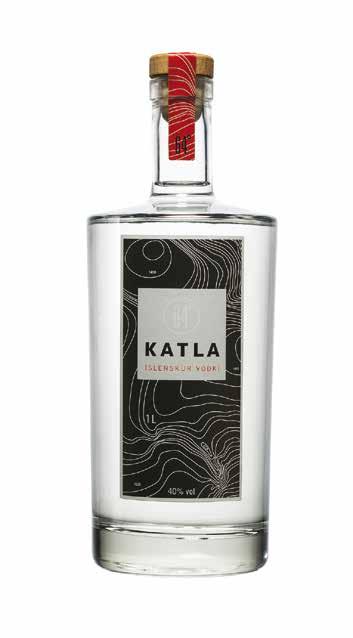
www.icelandictimes.com 35


It Began with Hot Water and Stubborn People
“Ístex buys wool directly from farmers, and over 80% of the company is owned by farmers,” explains Sigurður Sævar Gunnarsson, CEO of Ístex. The company’s headquarters are in Mosfellsbær, where wool processing has been continuous since 1896, previously under the name Álafoss. Ístex took over the operation in 1991, and the company washes and processes about 99% of all Icelandic wool.
The Uniqueness of
ICELANDIC WOOL
Ístex is a wool processing company that aims to create the most value from Icelandic wool producing high-quality products for those who choose natural, sustainable, and environmentally friendly products. The company is built on a tradition that dates back to late 19th century, and the unique properties of Icelandic wool are reflected in the company’s diverse products.
“The key to Icelandic wool processing is hot water and stubborn people,” says Sigurður with a smile, referring to the hot water that flowed through narrow basin at Álafosskvos which enabled people to begin washing and processing wool at the end of the 19th century. “The company in its current form was founded in 1991, decidedly against the odds because there was severe economic recession, bankruptcies were common, and synthetic fabric dominated the market. But people did not give up,” he adds. Icelandic stubbornness over the decades has certainly paid off because Icelandic wool is today a world-renowned product and sought after for its unique properties.
Wool Yarn and Indispensable Blankets
Ístex produces hand-knitting yarn in a total of seven different versions from Icelandic wool yarn, including Álafosslopi, Einband, Jöklalopi, Léttlopi, and Plötulopi. “The versions have different properties and are therefore suitable for various knitting projects,” Sigurður points out. “For example, Álafosslopi is warm and suitable for outdoor clothing, while Fjallalopi, which is our newest yarn, is thinner and therefore well suited for delicate and lightweight garments. Hosuband is a version especially durable and is therefore great for socks.”

Ístex also publishes hand-knitting books with diverse designs. The latest is number 43 in the series and is titled “Skýjaborgir” or In the Clouds. It includes patterns for a variety of sweaters and other
www.icelandictimes.com 36
Sigurður Sævar Gunnarsson
knitted garments, designed by artist Védís Jónsdóttir. Védís is also the designer behind most of the wool blankets, available in various colours and patterns under the name Lopi. “Our blankets have been exceptionally popular as gifts since they are Icelandic designs made from Icelandic wool,” says Sigurður. “Icelandic woollen blankets are an essential item in every home. Everyone should own at least one good blanket.”
Unique Icelandic Wool Duvets Ístex has also started producing duvets and pillows from Icelandic wool under the name Lopidraumur. The company buys the wool directly from farmers, and it is STANDARD 100 by OEKO-TEX® certified. “Wool is actually an excellent material for duvets and pillows because research has shown that wool products improve sleep,” says Sigurður. “Icelandic wool is temperature regulating because it has the property of maintaining a unique moisture balance, thus maintaining a comfortable temperature. This breathability ensures a good sleep regardless of temperature, and the duvet is therefore suitable for all seasons.”
Text: Jón Agnar Ólason
Photos: Ljósmynd/Ístex


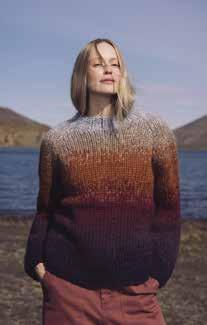

www.icelandictimes.com 37
Uniquely Icelandic
THE ÓFEIGUR FAMILY WORKSHOP
“What can I buy that is truly unique to Iceland?” is a question Icelanders often get from visitors. The answer is: Handmade pieces created by local master craftsmen!
On Skólavörðustígur, Reykjavík’s most distinctive shopping street, there is a beautifully restored green timber house from 1881. It houses a family and a family business of master goldsmiths –started by the now deceased family father Ófeigur, his son Bolli is now at the helm
carrying on his legacy – as well as a master dressmaker, Hildur, the wife and mother. Here they each have their own small working spaces where they design and make their very unique pieces; Bolli works mostly using metals such as gold, silver and titanium with different kinds
of Icelandic stones, lava or imported stones like his father did. Hildur makes her pieces out of soft materials, with hats being her speciality. Each hat is unique and handmade from wool and lined with cotton. Most have a drawstring for adjusting the size. She also makes classic dresses out of materials that make the dress especially nice fitting – and she can make a dress to size for you before you leave Iceland. To decorate the solid colour dress, one can buy a hand painted silk wrap or a beautiful unique piece of jewellery made by Hildur’s husband or son. When Bolli was growing up, his father had his workshop at home, so Bolli got to try his jewellery-making skills at a very early age, which led him to study the art and become a master goldsmith like his father. There is a piece on display in the shop that he made when he was 8 years old. Goldsmiths in Iceland study their craft in

Tourism , C ulT ure and B usiness issue 53 • 2024 www.icelandictimes.com 38
Hildur makes her pieces out of soft materials and her speciality is hats
such a way that they can easily sit down at a 200 year-old goldsmith’s workbench and start working, such are their skills. Today more modern tools are used but almost everything is still made by hand, so each piece is unique. Ófeigur was also an artist and, among other things, he made big sculptures that can be seen on the walls of the shop. He also refers to his pieces of jewellery as sculptures – just on a smaller scale.
When Hillary Clinton visited Iceland some years ago she was given a copper brooch made by Ófeigur that Madeleine Albright saw and liked so much that she bought four; three made by the father and one by the son. The next time Albright was seen on international TV, she was wearing one of the beautiful brooches. (There is also a thank you letter from Mrs Clinton on the wall in the shop). These signature brooches of Ófeigur’s workshop, each one unique, can still be bought at the shop. Bolli can make jewellery to order. Bolli likes to make jewellery pieces out of titanium, which is lighter than silver, never tarnishes and does not cause any allergic reactions. He uses other metals and materials as well. For example, he makes necklaces with old Icelandic symbols for magic spells and for the wayfarer, to help him find his way safely, even in bad weather. Bolli likes to pick up rocks out in nature and make them into unique items. He also uses lava in his jewellery, sometimes from Iceland’s latest volcanic eruptions. Bolli had an idea for jewellery in the manner of the Northern Lights but he needed beads in those colours, so he asked Troll Beads if they could make them. They didn’t think it would be possible but, within about 4 months, they had managed to make beautiful Northern Lights coloured beads which Bolli now uses in his jewellery. Last but not least, it is worth mentioning that a new art exhibition is put on display on the second floor every month, so all lovers of art and craftsmanship who want to experience something uniquely Icelandic, should not miss a visit to the green house at the bottom of Skólavörðustígur. Best of all, they will be sure to meet some of the members of this skilled Icelandic family.
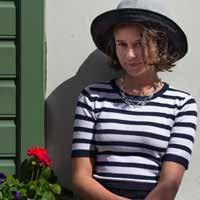
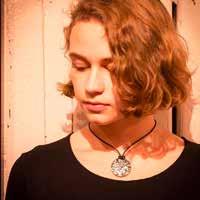


www.icelandictimes.com 39
THE MANTLE BELOW
REYKJANES
Are there only about 8 km down to the mantle below Reykjanes?
Anumber of questions arise in connection with the upheaval under Reykjanes. One of the facts that is remarkable is that all the earthquakes that are now happening in Grindavík are shallow, as the picture shows. There are almost no earthquakes measured at depths greater than 7 to 8 km under Reykjanes. The Earth’s crust under Reykjanes seems to be quite thin, like an oceanic crust.
What information do we have about the thickness of the crust and the temperature under it in Reykjanes? We know, for example, from the geothermal drilling that it heats up very thoroughly in the lower part of the earth’s crust on the outside of Reykjanes. When the Reykjanes deep well was down to a depth of about 4.5 km in 2017, the temperature had reached about 535 oC and was rapidly increasing when drilling stopped. Geological studies show that temperatures have even reached 650 oC near the bottom, but the rock needs to go well above 1000 oC to start melting.


Most of the physical characteristics of a rock change when the temperature rises, and science talks a lot about the change in the properties of a rock when it heats up and changes from a hard and solid rock to a warm and soft rock. Scientists call this brittle to ductile transition. Some say that the change starts at about 550 oC, while others believe that rock becomes soft only at about 700 to 800°C, which is more likely. As soon as the rock heats up to this point and becomes soft, the rock stops carrying seismic waves altogether. They die out and disappear in this heat and depth.
Let’s look back to the crustal break and the drift valley at Grindavík. Why do no earthquakes occur at greater depths? It can be caused by two things. We know that beneath the Earth’s crust, we have the mantle and it is too hot to break and cause earthquakes. Under the crust, at a depth of more than 8 km, there is a completely different world, which is the world of the mantle, which extends about 2900 kilometers into the earth, or all the way down to the surface of the core. The other possibility is that under the 8 km crust there is a layer of basaltic magma, but all earthquakes are suffocated in such a layer.
It’s really striking, I think, that all earthquakes die out when you get down to a depth of about 8 km.
The boundary between the earth’s crust and mantle is unmistakable under Reykjanes, which reminds us thoroughly that the cause of all these things must come from the mantle, and it is too hot to break like normal
rock. There is, after all, movement and pressure in the earth’s crust, which causes the crust to break and send out earthquakes. However, the mantle is partially molten, which means it is partially completely molten magma. It’s perhaps not a very good analogy, but you can think of the mantle as wet sand at the beach, where a thin film of sea water lies between the grains of sand. Similarly, the mantle is wet, but there is a very thin film of lava magma that penetrates between the grains of sand or crystals in the partially molten mantle. The lava magma is created there.
Text: Haraldur Sigurðsson
www.icelandictimes.com 40
Photos: Páll Stefánsson
Haraldur Sigurdsson Eldfjalla
Photo: Friðþjófur Helgason



www.icelandictimes.com 41
THE SAGA PATH: HISTORY EXHIBITIONS IN WEST ICELAND
The Settlement Center in Borgarnes
The Settlement Center offers two exhibitions where guests walk through showrooms with audio guides. The Settlement Exhibition shows how Norsemen ventured in medieval times across open seas, why they left their homelands, and what awaited the first settlers in Iceland. The Egil’s Saga Exhibition focuses on one of the most memorable figures in Icelandic Sagas, Egill Skallagrímsson—a renowned poet but also a fierce Viking and marauder on foreign soils. Each exhibition lasts 30 minutes, and visitors can choose from 15 languages. At the Settlement Center, entertainment and education about the country, its history, and its people come together. And don‘t miss outon the souvenir shop, actually built into Búðarklettur rock, housing the oldest geological relics in West Iceland, along with a restaurant in one of Borgarnes’ oldest houses.
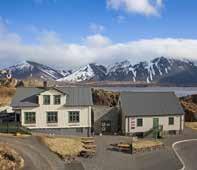


Snorrastofa, Cultural and Medieval Center in Reykholt
Snorrastofa was founded in memory of Snorri Sturluson. Snorri was a chieftain in Reykholt, a historian, politician, and the author of the Edda (book of Norse mythology), Heimskringla (the Sagas of the Kings), and likely Egil’s Saga. Snorri is one of the most renowned Icelanders worldwide, and his story can be explored through indoor and outdoor audio guides available in 7 languages. A visit to Reykholt provides guests with diverse insights into Icelandic history and offers enchanting outdoor experiences, hiking trails in peaceful environments, and more. Due to the significant history of the location, Snorrastofa has participated in numerous research projects related to the site and medieval studies in general. The guesthouse also features a gift shop with a selection of books and beautiful Icelandic handicrafts.


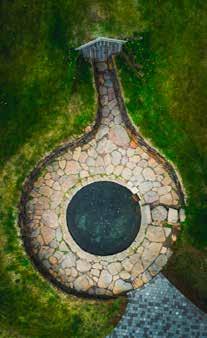
www.icelandictimes.com 42
Iceland’s historical epochs continue to fascinate and interest in the Icelandic Sagas and their context extends far beyond the country’s borders. This interest is particularly well-cultivated in the West, where historical sites abound. Visitors there can explore four distinct history exhibitions that together form the unique Saga Path. By visiting these exhibitions, one gains a comprehensive and vivid picture of eventful periods in the history and culture of the land, when heroes roamed the districts, chieftains fought, and destinies were decided. The exhibitions are notable for their impactful reinterpretation of a unique era in Iceland’s history, and the Saga Trail offers an enjoyable and enlightening experience not to be missed.
Eiriksstadir, Living History Museum in Haukadalur
Eiriksstadir is a faitful reconstruction of an actual house that was built in the 10th century in the same area where the current house stands. A visit to Eiriksstadir is like a journey through time to another world of history in Iceland. The house is set up as a fully furnished home, not just a museum tucked away behind glass. In fact, visitors are encouraged to come and experience the story by exploring and literally touching the past while immersing themselves in a bygone era. Eiriksstadir was the home of Eirik the Red and the birthplace of Leif Eiriksson, the first known European to discover America. The site appeals to both young and old, enthusiasts and scholars alike. To top off the experience, Eiriksstadir gift shop allows visitors to take home reconstructed historical artifacts as souvenirs.
Leif Eiriksson Center, Búðardalur
Vínlandssetrið Leifsbúð in Búðardalur is an exciting destination for both young and old, where stories of the voyages of Eirik the Red his son „Lucky“ Leif Eirikson in Greenland, Canada, and the United States come to life in a new exhibition. Visitors also get acquainted with Gudrídur Þorbjarnardóttir, the foremost female explorer in Icelandic history. A visit to Leif Eiriksson Center is a feast for the eyes and ears, where you can learn about the first European to reach America, suitable for both individuals and groups. The exhibition combines archaeology, history, genealogy, and literary studies with art and multimedia, making it a delightful experience no matter the weather. The souvenir shop offers exciting mementos of various kinds, and our café awaits you with delicious refreshments and delicious quality coffee.
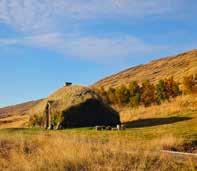

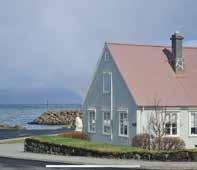
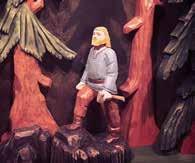


www.icelandictimes.com 43
KRAUMA Geothermal Baths
Experience Iceland’s geothermal energy in these soothing hot baths
Enjoy Iceland’s sublime naturallyheated waters while bathing in geothermal baths in West Iceland. Krauma, the newly opened bathing facility, offers five relaxing natural baths, along with a cold tub, two soothing saunas and a relaxation room, where you can lounge by the fireplace while listening to calming music. This is the perfect way to experience Iceland’s renowned waters in a more intimate setting than the more crowded Blue Lagoon.
Powerful hot spring
The water for the baths is heated by Deildartunguhver, which is considered Europe's most powerful hot spring. It provides 200 litres per second of hot water at 100°C (212°F). To achieve the perfect bathing temperature, Krauma mixes the hot water with cold water from Rauðsgil, which originates in what was the Ok glacier, Iceland’s smallest glacier. Visitors can see Deildartunguhver next to the baths, with its water bubbling up and splashing against bright green moss and jagged rocks. Seeing where the heated water comes from adds to this unique experience. Be sure to keep your distance, though, to avoid being splashed if you get too close.
Important hot water source
Deildartunguhver is crucial to the comfort of the region. Most of the water used for central heating in the West Iceland towns of Akranes and Borgarnes is taken from Deildartunguhver. The hot water pipeline to Akranes is 64 kilometres long, which is the longest in Iceland. It’s still about 78-80°C when it reaches the town.
West is best
Krauma is conveniently located in West Iceland, where there are numerous attractions. Starting from Reykjavík, you can make stops at the popular fishing town of Akranes and climb to the top of its lighthouse for spectacular views, before continuing to

Tourism , C ulT ure and B usiness issue 53 • 2024 www.icelandictimes.com 44
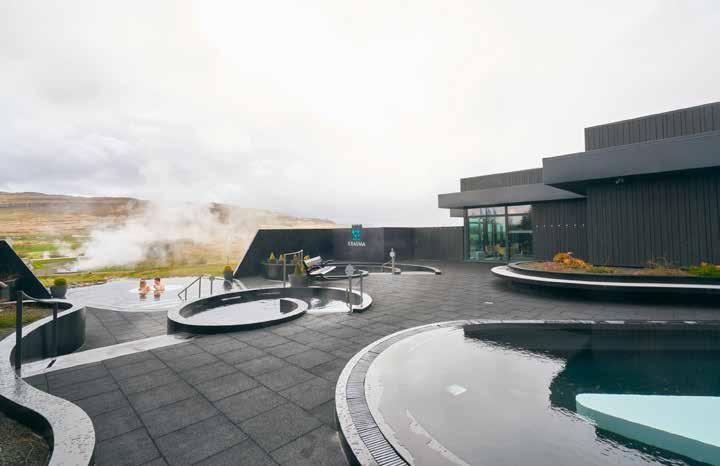
Borgarnes to visit the Settlement Centre to get a taste of the famous Sagas. In Reykholt, one of Iceland’s most notable historical sites, you can stop at the Icelandic Goat Centre before visiting Snorrastofa, dedicated to Snorri Sturluson, one of the most famous and important figures in Icelandic literature. Snorri penned the Edda, Egil's Saga, and Heimskringla before his death in 1241. There is so much to see and do in West Iceland and Krauma is perfectly positioned.
Visit Krauma
Geology enthusiasts and spa lovers alike will enjoy a visit to Krauma. You can experience nature from its core while bathing in these unique geothermal baths in beautiful West Iceland. Make sure you pay a visit to Krauma during your visit to Iceland. -JG

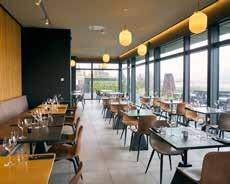

www.icelandictimes.com 45
Krauma Deildatunguhver, 310 Borgarbyggð www.krauma.is


STRACTA HOTEL is located close to all the major natural wonders and tourist attractions in South Iceland. The hotel is surrounded by stunning mountain views, including that of the famous volcanoes Hekla and Eyjafjallafjökull.
Rangárflatir 4, 850 Hella +354 531 8010 info@stractahotels.is www.stractahotels.is/

WESTFJORDS ADVENTURES
Your gateway to the unique Westfjords, with various activities and attractions. We will assist you in making unforgettable memories in the Westfjords, with incomparable landscapes and locations!
þórsgata 8 a Patreksfjörður +354 456 5006 audur@wa.is www.westfjordsadventures.com

5 MUSEUMS – One ticket only 2300 isk valid throughout the year. Akureyri Museum, Nonni‘s house, Akureyri Toy Museum in the Old Akureyri, Davids writers home in Akureyri and Laufás heritage site just 35 km from Goðafoss/Akureyri.
akmus.is or follow us on Facebook & Instagram

THE MUNICIPAL MUSEUM IN GARÐSKAGI is located in a natural paradise, which blends the beauty of the landscape with its rich animal and birdlife. A restaurant and camping site with facilities is on-site and you might see dolphins and whales from the terrace! Byggðasafnið á Garðskaga +354 4253008 - +354 8621909 byggdasafn@sudurnesjabaer.is margret@sudurnesjabaer.is sudurnesjabaer.is

HÓTEL VESTMANNAEYJAR allows guests to explore the Westman Islands breath-taking scenery while providing comfortable and relaxing accommodation. The hotel provides direct access to fantastic hiking and bird watching.
Vestmannabraut 28, 900 Vestmannaeyjar +354 481 2900 booking@hotelvestmannaeyjar.is hotelvestmannaeyjar.is

HÓTEL HVÍTSERKUR. Welcome to our cozy countryside Hotel located on the beautiful Vatnsnes peninsula in NorthWest of Iceland, where the untouched nature in the area leaves our guests with endless opportunities for activities. Thorfinnsstadir, Vesturhópi, 531 Hvammstangi +3548570899 info@hvitserkur.is https://hvitserkur.is/


ALMAR BAKARI
Our philosophy is simple! It is to offer healthy and good handmade bread and delicious pastries. Come to us for fine coffee in a comfortable environment with excellent service.
Sunnumörk 2, 810 Hveragerði +354 483 1919 almarbakari@gmail.com www.almarbakari.is

HÚSAVÍK GREEN HOSTEL features a garden, shared lounge, terrace, and free WiFi throughout the property. Featuring a shared kitchen, this property also provides guests with a grill, and guests can enjoy garden views. Vallholtsvegur 9 640 Húsavík Tel: +354 866 0882 husavikgreenhostel@gmail.com husavikgreenhostel.is/
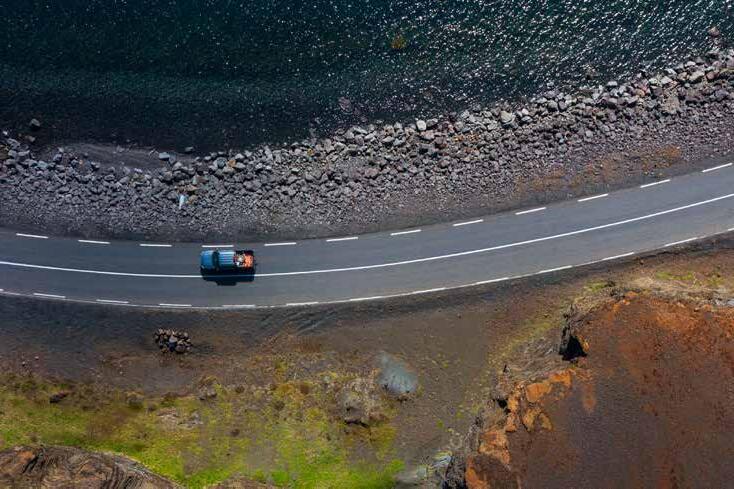
Vegagerðin Icelandic Road and Coastal Administration, IRCA @vegagerdin Check trafficinfo.is Call 1777 Drive safely
DALABYGGÐ
You start your trip in Reykjavik, you set off and in under two hours of driving, you enter Dalir region. Region of pristine nature, exquisite scenery, charming local businesses, family farms, regional food and leisurely atmosphere.
There is not much like it, laying beside an open window with fresh breeze and the only sound being from common snipe or redwing, maybe some baaing from sheep in far.
Relaxed after a day of sightseeing, to have tasted food direct from farms all around Dalir, bathing in geothermal pools, walking around black sand beaches. Not to mention when you get to experience bright Icelandic summer nights.
Learning about the first settlers of Iceland, the work of the first Icelandic architect Rognvaldur Olafsson, picture moments by art of Icelandic sculptor Asmundur Sveinsson or looking over the landscape that gave inspiration to poets like Steinn Steinarr and hosted battles of Vikings in earlier centuries.
Yes, there is a reason why we are proud of our region of Dalir, join us this summer and see why.





Tourism , C ulT ure and B usiness issue 53 • 2024 www.icelandictimes.com 48


NATURE‘S SCULPTURE GARDEN Kerlingarfjall
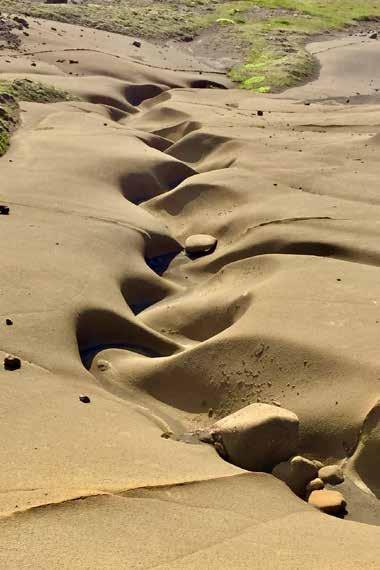

Nature is, of course, one great work of art, and some of its most outstanding pieces are to be found in the mountains. An obvious example of this is Kerlingarfjall mountain in the Snæfellsnes peninsula, which is a captivating sculpture garden, no less—one that never fails to surprise me. The basalt rock that forms the mountain has been shaped by water and winds into incredible formations. Let‘s have a closer look at four distinct examples.
The first image shows a winding streambed where flowing water has carved a serpentine path into the basalt. Even if water flows only during heavy rain and thaws, it has nevertheless created an unforgettable image in the rock.
The second image is a large sculpture on a pedestal. Once I encountered this natural work of art, high up in the mountain, I immediately thought of Ásmundur Sveinsson, Iceland’s great sculptor (1893-1982). The mountain dog Snælda has taken her place to demonstrate the actual size.
The third image is a composition of made by nature, naturally named “The Eye,” with Snælda the dog once again posing.
The fourth image is a phenomenon high in the mountain’s northeast of the main area, not an easy one to find. This is “The Door,” and this door is by no means small. There, Kerling (the Giantess) has undoubtedly entered the mountain in ancient times. Two types of basalt can be seen there; ordinary brown-tone basalt forms the surroundings, while the Door itself is greyish brown in colour, made from a mixture of basalt and glacial rock. There lies an entrance into the mountain, for sure—but be advised that the Door only opens for those who know the password and knock correctly on the Door.
Geologically speaking, the Door was formed when a gigantic iceberg from the glacier that surrounded the mountain during the Ice Age carved out the gap under the basalt. Later, the ice melted, and a blend of glacial rock and basalt filled the cavity. -Haraldur Sigurðsson
Tourism , C ulT ure and B usiness issue 53 • 2024 www.icelandictimes.com 50


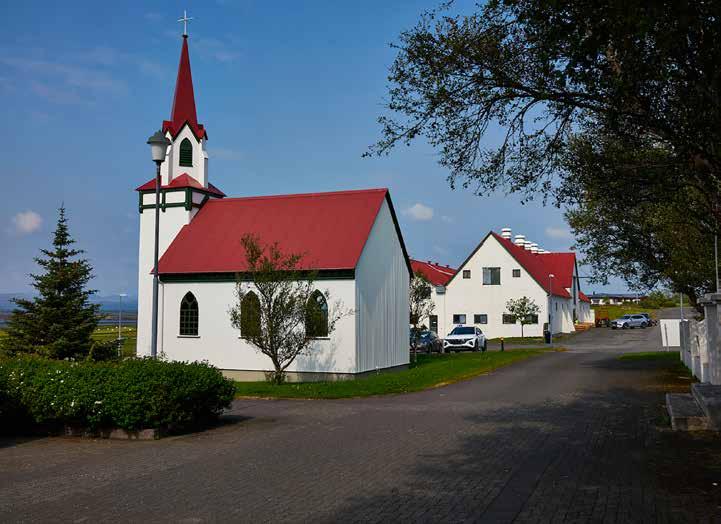
HVANNEYRI IN SKALLAGRÍMUR’S SETTLEMENT AREA
In Borgarbyggð, with its 4090 inhabitants, two universities operate, one in Bifröst and the other in Hvanneyri. The municipality, which is the largest in the west of Iceland, holds many gems, one of which is the village of Hvanneyri in the south of Borgarfjörður. There you can find the headquarters of the Agricultural University of Iceland, the Agricultural Museum of Iceland and Ullarselíð, a craft store where handwoven Icelandic wool is the center of attention. Hvanneyrartorfan, with the first schoolhouses on the site, the old cowshed that houses the museum, a gymnasium, a storage and the church that was inaugurated in 1905, is owned by the University and is unique. Hvanneyrartorfan is protected because of its uniqueness, as the houses of the first Icelandic house masters are gathered on one and the same spot. The area of Hvanneyri is in the settlement of Skallagrímur Kveldúlfsson, the father of one of Iceland’s most famous sons, Egill Skallagrímsson. But Skallagrímur gave Grímur hinn Háleyski Þórisson land in the south of Borgarfjörður and he was the first occupant of Hvanneyri. Photographs & text: Páll Stefánsson

Tourism , C ulT ure and B usiness issue 53 • 2024 www.icelandictimes.com 52
The church and the old cowshed
Ullarselið


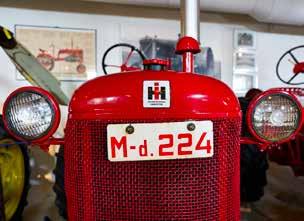


www.icelandictimes.com 53 Hvanneyrartorfan
Tractor from 1930 in the Agriculture Museum of Iceland
Milk processing a hundred years ago, at the Agricultural Museum of Icelandslands
Farmall Cub, but this tractor existed on every farm in Iceland from the middle of the last century, and until the 1960s
Hay gathering in middle of summer at Hvanneyri
PHOTO SERIES FROM THE WEST

S næfellsjökull is probably the crown jewel of the west. The light that’s exceptionally beautiful in the west in the late summer. Icelandic Times took a trip around Snæfellsnes to capture the light and the mood that is so magical at this time of year. When the fog creeps in to Rif and the moon kisses Grundarfjörður in Breiðafjörður. This is just how Iceland looks… right at this moment. Photographs & text: Páll Stefánsson

The ever so beautiful Snæfellsjökull
Tourism , C ulT ure and B usiness issue 53 • 2024 www.icelandictimes.com 54
Eldborg and Snæfellsjökull

Looking towards Rif (3 small lights in the left corner) in Breiðafjörður in a perfect latesummer night

In Kolgrafarfjörður


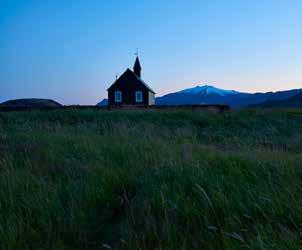

www.icelandictimes.com 55
Grundarfjörður bathed in the moonlight
Kirkjufell towering over Grundarfjörður
The church at Búðir
Perfection in Hnappadalur
The new information center for Snæfellsjökull national park at Hellissandur, is a 700 square meter building wich cost 700 million to build

THE WESTERNMOST PART OF SNÆFELLSNES
If there was a poll about the most beautiful municipalities in the country, i’m pretty sure that Snæfellsbær would be in the top five. After all, Snæfellsbær is the westernmost municipality in Snæfellsnes, with its 1,700 inhabitants, with exceptionally special nature, and an entire national park, Snæfellsjökull National Park. Last year, the national park was visited by more than half a million tourists. Snæfellsbær is not just about nature, it has two towns, Arnarstapi and Hellnar on the southern side of the promontory, and three towns on the northern side. Furthest to the west is Hellissandur, then comes Rif, with one of the best fishing harbors in the country, and to the east is the most populous urban center, the fishing town Ólafsvík. Many well-known and unique natural pearls can be found there by the glacier, such as the beach between Hellnar and Arnarstapi, Lóndrangar, Dritvík and Svörtuloft, the westernmost rock on Snæfellsnes. Then, of course, the volcano Snæfellsjökull, one of the most beautiful mountains in Iceland. When Icelandic Times / Land & Saga passed the headland last week, the glacier was hidden in the clouds, but that was all right because the nature is so unique there in the west of Snæfellsnes there is always something to explore. Photographs & text: Páll Stefánsson

Ólafsvík, the largest town of Snæfellsbær.
Click here and view gorgeous photos and reviews of Snæfellsbær
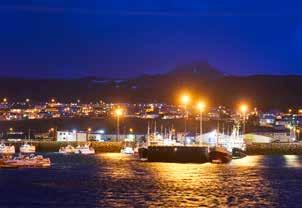
The harbour in Ólafsvík.
Tourism , C ulT ure and B usiness issue 53 • 2024 www.icelandictimes.com 56
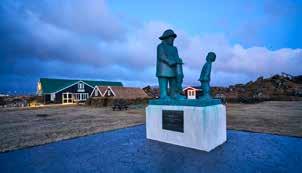


Looking down from Þúfubjarg.


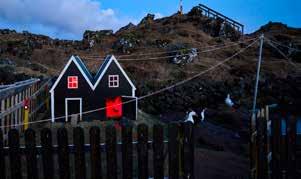
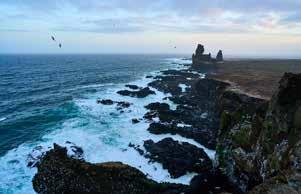
Lóndrangar seen from Þúfubjarg.

www.icelandictimes.com 57
Jöklarar, an honorary monument for sailors that drowned at Hellissandur. The sculpture is made by Ragnar Kjartansson
House of the ducks at Hellissandur.
New times and old, Arnarstapi.
New houses at Hellnar.
The harbour at Rif, on of the country’s best harbours.
The new information center for Snæfellsjökull national park at Hellissandur was consecrated recently, beautiful building made by Arkís architects.

GO WEST EXPLORE THE WONDROUS WESTFJORDS
Enjoy hiking tours and other adventures with West Tours
In a country full of beauty, the Westfjords may be the most stunning region of all. Endless coastlines, jaw-dropping cliffs, and gorgeous mountain landscapes await those who make the trip. Travellers will find that the Westfjords are the most sparsely populated inhabited area on the island, which is part of the region’s charm. There is striking nature every which way you turn, from mountains to empty beaches to winding roads where you may not encounter another car for hours.
The Westfjords are an amazing peninsula characterised by steep, flat, and peaked mountains between deep blue fjords and beautiful colourful beaches, with residents who welcome travellers. West Tours Travel Agency and Tour Operator is run by a highly professional team with years of experience in assisting travellers with their travel plans to and around the region.
Hiking tours spanning the breathtaking landscape
West Tours offers organised hiking tours, ranging from a day tour to multiple days, in some of the most spectacular areas on the island. For instance, travellers can enjoy a day hike in the remote and pristine nature reserve of Hornstrandir, which is known for its stunning scenery and unspoiled nature, adding it to many hiker’s bucket lists. The area is the northernmost part of the Westfjords and is extremely remote, with almost no infrastructure.

Hikers can enjoy more than 250 species of flowering plants and ferns that are known to grow in the nature reserve area. Wildlife is also a draw as Arctic foxes are the prevailing mammals, seals, and about 30 species of birds nest in the nature reserve.
Up for some adventure?
In addition to hiking tours, West Tours offers numerous activities, from boat rides to Vigur and Grimsey islands to whale watching, sea kayaking, Jeep tours, rib safaris, and horseriding tours. There is truly something for everyone in any season, from puffin watching in the summer to hunting northern lights in deep winter.
Local company with decades of experience
West Tours is a well-established travel agency and tour operator that began in Ísafjörður in 1993. West Tours offers a great selection of day tours and activities, along with private
tours and tailor-made travel experiences. They focus on the uniqueness of the region and try to open the doors to the hidden gems of the Westfjords.
Based in idyllic Ísafjörður
West Tours is based in Ísafjörður, the unofficial capital of the Westfjords, but don’t let that “title” fool you; it’s just a tiny town of about 4,000 people. Ísafjörður is a good base for exploring the Westfjords. You’ll find towering mountains, interesting rock formations, and more sheep than people in a short drive outside town. West Tours’ clients can choose between many services. If you plan a day trip, a weekend or a longer trip in the Westfjords during summer or winter, West Tours will be happy to make it an unforgettable experience.

West Tours
Adalstraeti 7, 400 Isafjörður
Tel: +354 456 5111
www.westtours.is
www.icelandictimes.com 58
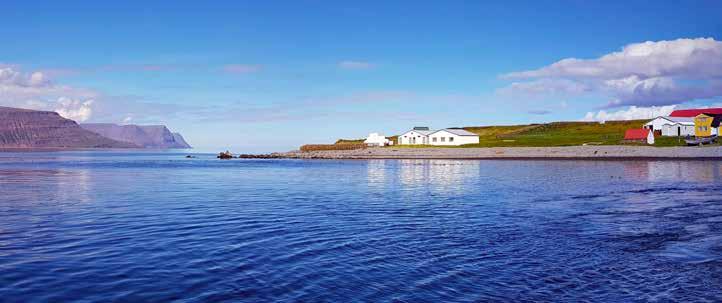



www.icelandictimes.com 59
RAUÐASANDUR SOUTH OF
Patreksfjörður
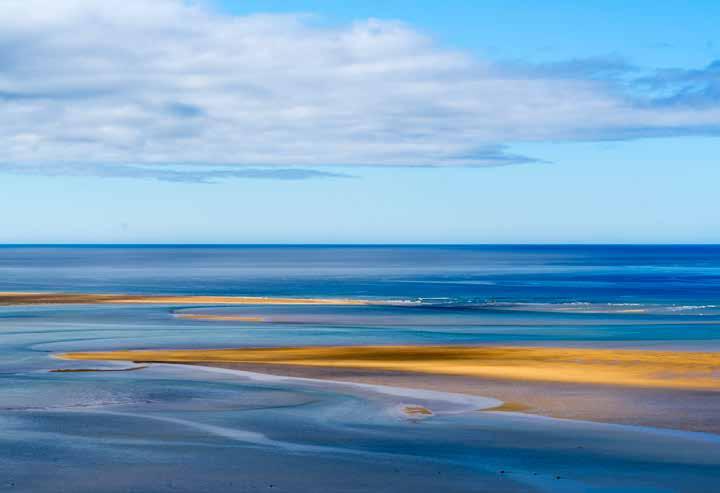
Lonely Planet, one of the most respected and most popular travel book publications and information provider about countries and places to see in the world, placed Rauðasandur on Barðaströnd, currently in thirteenth place among the most beautiful/best beaches in the world. The Pass in New South Wales, Australia reigns supreme. Only one beach in Europe is ranked higher, West Beach, Berneray, Southern Isles of Scotland, that beach is ranked higher than Rauðasandur. It was Ármóður rauði Þorbjarnarson who settled Rauðasandur
on Barðaströnd, and over the centuries the area has been one of the best in the country to inhabit, grassy and rich in land, good weather and light snow. Saurbær, the main estate of the area, was for centuries one of the most valuable property of land in the country, as it came with large perks, in seals and eggs, but Látrabjarg, one of the largest bird cliffs in the country, is located west of Rauðasandur. There are only 400 km / 240 mi, from Reykjavík and west to Rauðasandur at Breiðafjörður, south of Patreksfjörður. Photographs & text: Páll Stefánsson


www.icelandictimes.com 60
The
road to Rauðasandur from Patreksfjörður across Mjósund Summerday at Rauðasandur
Rauðisandur

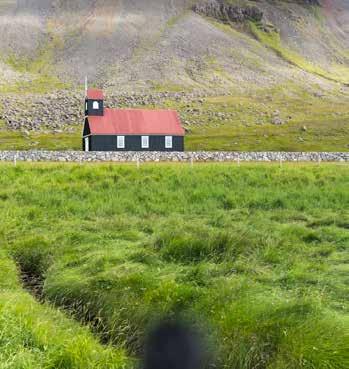
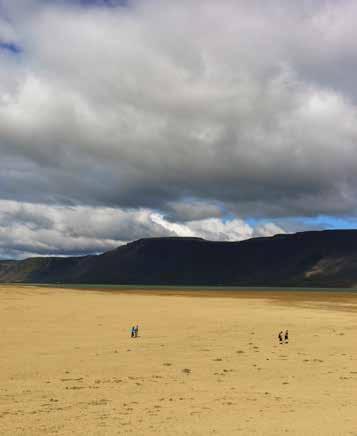

www.icelandictimes.com 61
Rauðisandur
Látrabjarg in the far
Beautiful summerday at Rauðasandur
Rauðasandur, Bæjarvaðall and Hraunshnjúkur

ALMOST THE NORTHERNMOST POINT
Hornstrandir, the northernmost part of the West Fjords, is the largest deserted area in Iceland, having been abandoned over seventy years ago. Remarkably close to Greenland, it’s only 280 km away across the Greenland Strait. In 1975, this unique region was designated a nature reserve. Notably, Hornstrandir records the lowest average annual temperature in Iceland. Yet, during the Middle Ages and the Famine of the Mists, it was a rare haven where starvation was unknown, thanks to its abundant food sources. This was mainly due to two of the northern world’s largest bird cliffs, Hælavíkurbjarg and Hornbjarg, which sustained the population along with the excellent sea fishing in the area. With the advent of modern times around 1900, Hornstrandir’s population swelled, reaching over a thousand by 1920. However, just over twenty years later, it was utterly deserted. Interestingly, life still persists in Melrakkaslétta, the northernmost part of the country.
The images capture various perspectives of Hornbjarg, the rock named after the area. Also featured is a running fox cub, the only four-legged animal that permanently resides in Hornstrandir year-round. Photographs & text: Páll Stefánsson



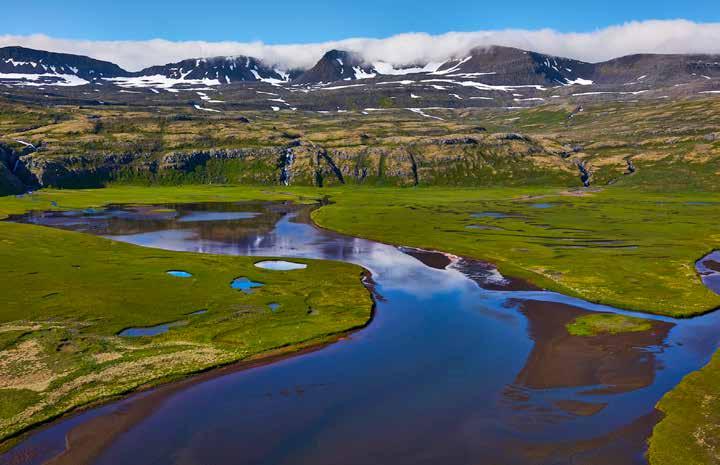
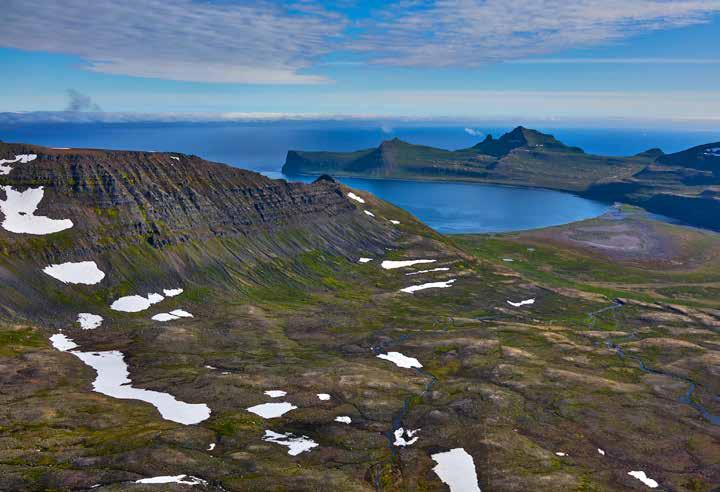
Preparations for the round-up.
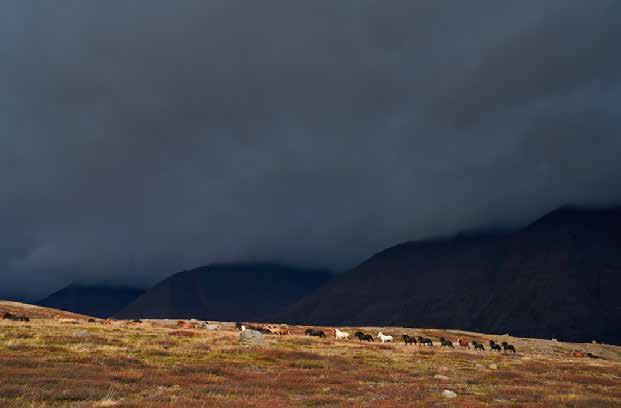
LAUFSKÁLARÉTT
Horses & men
Laufskálarétt is the largest horse round-up in the country, not far from the episcopal seat at Hólar in Hjaltadalur, Skagafjörður. It is always held there on the last Saturday in September. This year, Laufskálarétt was attended by almost three thousand people, who went there to see when several hundred horses and foals are driven from the highland pastures in the area down to Hjaltadalur, and then sorted to their owners. Up to a third of the visitors can be assumed to have been foreigners who love the Icelandic horse and a few of them participated in the drive with the locals. Most of the horses come down from Kolbeinsdalur, a desert valley north of Hjaltadalur.
Laufskálarét was inaugurated in 1954, 68 years ago, and has never been more popular. Of course, Land & Saga, Icelandic Times went to check it out. Photographs & text: Páll Stefánsson

Preparations for the round-up.
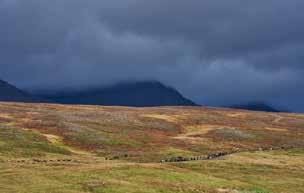
Comming down Ás to Laufsskálarétt.
Tourism , C ulT ure and B usiness issue 53 • 2024 www.icelandictimes.com 64


Standing on a horse, Mount Tindastóll in the background.
www.icelandictimes.com 65
The sorting of the horses at Laufsskálarétt.
Mývatn Tours Explore the Interior of Iceland

Enjoy the breathtaking landscapes of Askja and Viti
Iceland’s uninhabited interior is home to an otherworldly landscape that must be seen to be believed. It’s full of dramatic and wild scenery, swept by endless wind and marked by vast expanses of ice and desert. It’s the most distinctive landscape on the island, replete with lava fields and volcanoes.
Explore the highlands with Mývatn Tours
You can venture deep into the highlands on a day tour with the family-run business, Mývatn Tours. The Askja Classic tour, which has been operated for more than 40 years by Mývatn Tours, brings you to Askja on a unique 4x4 bus. Askja is a caldera (sunken crater) within the surrounding Dyngjufjöll mountains which offers dramatic volcanic features that were formed by collapsing land after a volcanic eruption. They are essentially huge volcanic craters. The area is remote and

awe-inspiring. Askja, which stands at 1,510 metres, emerges from the Ódáðahraun lava field, amidst rocky terrain.
The awe-inspiring Askja
Askja is in the middle of the Highlands and it takes between 3 to 4 hours to drive there. The trip starts and ends in the village of Reykjahlið, in the Lake Mývatn area. On the way up to Askja, the bus stops several times to have a closer look at the amazing landscapes and geological wonders, such as lava fields, glacial rivers, fresh water rivers, natural springs and towering mountains.
Travel in a vehicle equipped for the Highlands
Getting to the Highlands is no easy feat as basic rental cars are not suitable for the journey. With Mývatn Tours, you sit up high in a special vehicle designed to navigate the rugged Highlands, with a lot of space for your feet and your belongings. The 4×4 buses can handle the unforgiving lava fields and rivers. You are in safe hands with the experienced and professional drivers, so you can relax and listen to the guide while he tells you about the area.
When the bus arrives at the parking space in Askja around 12–1pm, passengers get 2–2½ hours to explore the area. There is

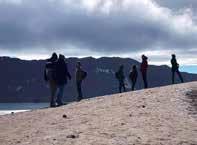
an approximately 35-minute easy walk from the parking area to Askja and the Víti crater area. Víti is a tremendous crater, filled with a pale blue lake, that emerged after the great eruption of the Askja volcano in 1875 where you can go for a swim, if conditions allow.
The Highlands are an unforgettable slice of Iceland and the guides of Mývatn Tours can’t wait to introduce you to the hauntingly beautiful landscapes of its interior. - JG

www.icelandictimes.com 66
Mývatn Tours 660 Mývatn, Iceland Tel: +354 464 1920 www.myvatntours.is myvatntours@gmail.com

R E LA X E N J OY EXP E RI E NC E
a tureb at hs . i s
MÝ VAT N N ATURE B ATH S
pre-book online at n
Akureyri Heart of the North
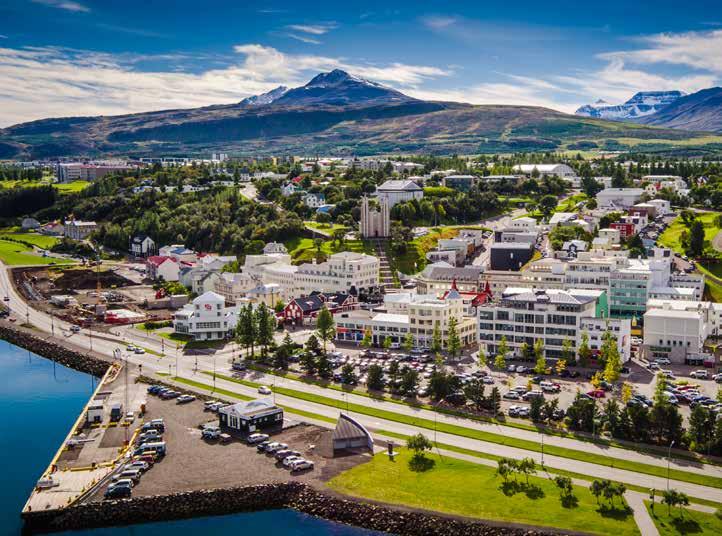
The dozen inhabitants in 1786, clinging to the side of Eyjafjörður, Iceland’s longest fjord, probably never imagined their brave struggle would ultimately result in a town of almost 20,000 people with all the services of a major city.
Akureyri is not as big as any of the world’s cities but it provides all the features and services expected of a big city in a very compact form, so that everything is available within a short distance.
Take, for instance, winter activities like skiing. The family-friendly slopes are under 10 minutes from the airport and the hotels. Likewise, the horse riding tours, boat trips, bird watching—to name a few—are all so close, you can almost touch them. You name it, it’s closeby. The weather, with its combination of crisp, dry snow and Northern Lights, makes a holiday here memorable.
Cultural Centre of the North
When it comes to culture, Akureyri has it all: museums, art galleries, international exhibitions, conference facilities, music venues, music of all genres, theatre and cinemas showing the latest films.
It has well over 20 restaurants, covering both Icelandic and international cuisine, with top chefs who create their own innovative cuisine. There is an abundance of cafés, each with their individual speciality.
For groups and individuals, Akureyri offers such a wide range of activities, events and opportunities, it maximises the time available. There are a multitude of tours covering every interest from flying to caving, from fishing to the Hidden People, walking to whale watching.
Sports of all kinds
Sport activities are very popular in the North and many sports are represented in this dynamic community. We have already mentioned the ski slopes, but other popular
facilities are the big skating rink, football fields and recreational areas ideal for running, hiking and downhill biking.
The geothermally–heated swimming pools, with their hot pots, jacuzzi and awesome water slides are open—and very popular—all year round.
The Arctic Open Golf championship is played on the most northerly 18-hole course in the world, just outside the city under both snow–covered mountains and the midnight sun. You can hire clubs if you need them and relax in the club house afterwards.
See the Sights
Akureyri is also a service base for many of the most important tourist destinations in North Iceland. From here, you can visit Mývatn, Dettifoss—the most powerful waterfall in Europe, the islands of Hrísey, and Grímsey, straddling the Arctic Circle; see craters and boiling mud pools and, in fact, reach all the
www.icelandictimes.com 68

pearls of the North in under 2 hours. If you are planning your visit, then it’s recommended you check out the Arctic Coast Way with all its wonders. www. arcticcoastway.is.
Easy Access
Flights from Reykjavík airport take just 35 min. Scheduled buses drive twice a day between Reykjavík and Akureyri. The trip from Reykjavík to Akureyri takes about 6 hours, although in the summer time you can choose a longer route over the highlands if you wish to turn your trip into a journey rich with sights and natural beauty.
The city bus service is free in town. Every type of accommodation is on hand, from 4-star hotels to camp sites.




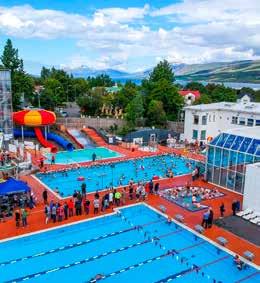
www.icelandictimes.com 69
+354 450 1050 info@visitakureyri.is www.visitakureyri.is Visit
Akureyri
HUSAVIK MUSEUM
The District Cultural Center of Þingeyjar Counties (DCC) in the northern district of Þingeyjarsýsla is a non-profit organization and operates four museums and exhibition venues in the area.
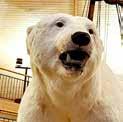


The Husavik Museum celebrates the vibrant and progressive history of the Þingeyjar Counties. The permanent exhibition “Daily Life and Nature” examines a century in the history of people whose relationship with nature was immediate and intimate in the years 1850–1950. Natural objects and manmade artefacts are displayed along with contemporary personal accounts by local people. The museum's other permanent exhibition is at the Maritime Museum, which provides a vibrant insight into the evolution of fishing and boat building in the area from the time of the rowboat until the age of the motorboat. Additionally, there are two galleries that hold a diverse range of multi-annual art exhibitions.
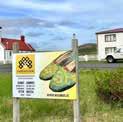



15 May–31 August: Every day 11–17.
1 September–14 May: Tue–Fri 13–16 & Sat 11–16.
Admission: ISK 2.200.
Seniors and students: ISK 1.700.
Children under 16: Free.
Groups 10 or more: ISK 1.900.

Tourism , C ulT ure and B usiness issue 53 • 2024 www.icelandictimes.com 70
Husavik Museum
The Husavik Museum is open to visitors all year.
Grenjaðarstaður
The historic settlement of Grenjaðarstaður in Aðaldalur is one of Iceland's largest turf houses and was, in its heyday, a prosperous and prominent vicarage. The oldest part of the existing turf house was built in 1865, and it was inhabited until 1949. Today Grenjaðarstaður is a museum, and through the myriad of traditional handcrafted and ingenious home-made items on display, guests will gain an understanding of how arduous survival was in those days. Visitors can walk through this unique house that is primarily insulated with lava rocks, which are abundant in the surrounding area, while taking in the vicarages' development over time.

Sauðaneshús
The oldest stone house in Þingeyjar Counties, Sauðaneshús, is located 7 km´s north of the town of Þórshöfn. Today, it serves as the home of the region's folk museum, which tells the story of life in Langanes Peninsula and how its residents have used their prosperous surroundings to endure through the ages in this unforgiving yet spectacular environment. A new exhibition opened in 2022, curated by two Icelandic artists who are also the caretakers at Sauðaneshús during the summer.
Sauðaneshús is open to visitors in the summer.
15. June-15 August: Tue-Sun 11-17.

Grenjaðarstaður is open to visitors in the summer.
1 June–15 August: Every day 11–17.
Admission: ISK 2.200.
Seniors and students: ISK 1.700.
Children under 16: Free.
Groups 10 or more: ISK 1.900.




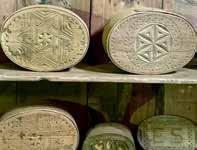
Snartarstaðir
Just outside the town of Kópasker lies Snartarstaðir, which houses the captivating folk museum of the North-Þingeyjar county. In the museum, you will see a wide variety of cultural and historical objects, with the main emphasis being on handicrafts and the beauty in everyday things. The museum is a good representation of the lives of the people in the area during the latter half of the 19th century and the first half of the 20th.
Snartarstaðir is open to visitors in the summer.
15. June-15 August: Tue-Sun 13-17.
Admission: ISK 1.500.
Seniors and students: ISK 1.100.
Children under 16: Free.
Groups 10 or more: ISK 1.300.
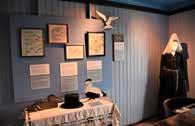

www.icelandictimes.com 71
Bird Paradise
In the mouth of the Fáskrúðfjörður fjord lies Skrúður island. The island is one big rock made of basalt and acid volcanic rock that rises 160 metres out of the sea. The island belongs to the Vattarnes land and was protected in 1995; it is 530 metres wide and 590 metres long. Over the centuries, there has been a lot of egg harvesting on Skrúður, as 18 bird species nest on the island. The birds number in the hundreds of thousands. There are, for example, 300,000 puffins in Skrúður alone. It is the most common nesting bird along with the gannet, which started nesting on the island in 1943. Fulmar and black-legged kittiwake are also common nesting birds on Skrúður. There is a remarkable cave on the island coast named Skrúðhellir. It is estimated at around 4,000 m², 125 metres long, and 80 metres wide at its widest point. Many puffins nest in the cave. Decades ago, fishermen sailed from Skrúður and between rowing tours, they stayed in the cave. Photographs & text: Páll Stefánsson


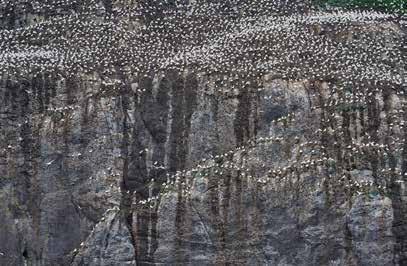


Tourism , C ulT ure and B usiness issue 53 • 2024 www.icelandictimes.com 72
The gannet settlement on the east side of Skrúður
Skrúður Island in all its glory
Looking at Skrúðhellir
Gannets in flight
Nesting gannets on Skrúður

EXPLORING BEAUTIFUL
Vopnafjörður





The scenic town is home to striking nature and fun outdoor activities. Vopnafjörður is full of picturesque mountains, wondrous waterfalls, historical farms and one of the best spots on the island to enjoy Iceland’s peace and tranquility. It’s scenic, steeped in medieval history and home to an array of wildlife. The history of the village dates back 1100 years as the bay was first settled by Viking seafarers from Norway. Foreign merchants frequently sailed to Vopnafjörður in the early modern age, and a settlement gradually formed on a peninsula where the village of Vopnafjörður now stands.
Stunning nature
The village has numerous opportunities for relaxation and outdoor activities. Many well-marked walking trails lead through the region’s natural pearls. One of them, “the elephant”, is a significant rock pillar on the east side of Vopnafjörður that resembles an elephant. Fuglabjarganes is a prominent cliff that juts out on the northern coast of the town. You can get a good look at it from a marked hiking path from the Strandhafnarvegur road, which is along the Fugla River. The scenery is beautiful with white beaches, towering cliffs and impressive rock caverns and pillars. Vopnafjörður is only 1-1.5 hours away from pearls of Iceland like Dettifoss, Mývatn and Langanes and only 2-3 hours from Herðubreið the queen of Icelandic mountains, Askja and Holuhraun.
Outdoor activities
Vopnafjörður is a birdwatcher’s dream and the Tangi peninsula north of the village is a beautiful and remote spot to watch seabirds. Vopnafjörður also offers several hiking routes that vary from easy to challenging. Beginners will find a wide range of mapped routes and marked trails that offer scenic views of the whole of Vopnafjörður —the bay, the Tangi Peninsula, inland areas and mountains. Hike to the end of the Tangi Peninsula to find interesting rock formations and beaches. Other fun activities include a round of golf at the well-maintained 9-hole course and taking a tip in the town’s heated swimming pool.
Culture and history
The old farm of Bustarfell is one of the best-preserved of the traditional Icelandic turf houses, which Icelanders called home for centuries. The museum offers a great opportunity to see how people’s ways of living have changed through the centuries. The foundations of the current house are from 1770, but the house has undergone alternations over the years. Meanwhile, the East Iceland Emigration Center is dedicated to the emigration years 1870-1914, the years after the great Askja eruption of 1875 that displaced hundreds. The center is focused on the history of the region and renewing contact with emigrants’ descendants. There are documents and photos on display. Stop by the village on your next trip to Iceland! -JG
www.icelandictimes.com 73
Tourist Information Center Hafnarbyggð 4a, 690 Vopnafjörður +354 473 1331 www.vopnafjordur.com
Of Course
THE EAST

When you look at the numbers, whether from the Tourism Office or the Road Administration, two parts of the country are left out in terms of tourism in Iceland, Vestfirðir and Austfirðir. Of course, it is far to travel to the east or west. Keflavík International Airport, where 99% of tourists arrive, and the capital Reykjavík are far away. Six hours west to Ísafjörður by car, about 12 hours to the east. Here are some pictures, samples from the east, pictures taken in the last few years. The east has much to offer, countless possibilities, incredibly strong nature, tranquility and a climate that is much milder than in the south and west, where the majority of visitors that come to Iceland see and experience. Have a good trip. Photographs & text: Páll Stefánsson


Tourism , C ulT ure and B usiness issue 53 • 2024 www.icelandictimes.com 74
Herðubreið seen from Möðrudalur.
The swimming pool in Neskaupsstaður.
Héraðsflói, where two of the east's biggest rivers flow, Jökulsá á Dal and Lagarfljót.


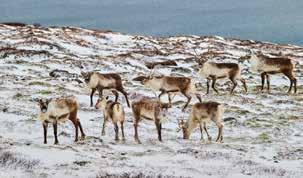

www.icelandictimes.com 75
Sheep by Búlandstindur in Berufjörður.
Streams by Snæfell.
The only part of Iceland where you can find reindeer is in the east.
Eskifjörður in the middle of the east.
MY MOTHER’S DREAM
The Recent Work of Erla S. Haraldsdóttir
One of Iceland’s greatest visual artists, Erla S.Haraldsdóttir, an academically trained painter, now exhibits for the first time a series of oil paintings where dream sequences and natural land-scapes from Iceland weave together, as a part of her autobiographical and autoethnographic project, “My Mother’s Dream”.
The artist invites guests to step into the world of dreams revolving around her great-grandmothers diary entries. A book where her great- grandmother journals her mother’s dream, also translated in Swedish, German, English and IsiNdebele languages, representing places Erla has become familiar with - in addition to series of large-format paintings and smaller sketches that illustrate sequences from a kinswoman’s dream from around the year 1858.
Iceland’s hidden people play a great part in this unfolding scenery and fond illusions on a deep intimate level, particular to the context of Iceland in the late 19th century where belief in the hidden people was prevalent. The exhibition “My Mothers Dream” offers a multilayered connec-tion reflecting elements from the artist
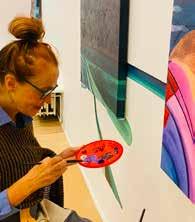
great-great-grandmothers dreams, while considering their value in our time.
The diary as an art piece also includes a photograph of the artist’s great-greatgrandmother and great-grandmother, leaving blank pages to be filled, to further uncon-scious dreamscapes.
“My Mothers Dream” offers the visual story of a hidden woman going through difficult labor, seeking help from a young girl and promising a gift in return, but strongly lecturing the girl never to speak of their encounter. The girl vows not to do so but breaks her promise and goes through great difficulty reconciling with the hidden woman.
Erla S. Haraldsdóttir's beautifully vibrant series are done with oil on canvas, but also directly on the walls of the museum space. Patterned wall art, inspired from the Ndbele tribe women in South Africa where Erla herself resides, gives onlookers the feel of deep ancient connection of the world as whole, hidden or not. Family matters, the role of a woman are a strong thread. The dreamy mythical material of the diary, mixed with several colorful inkjet prints of female reproductive organs merging with Ice-landic folk costumes, gives observers a feel of intensity and curiosity, yet calm reassurance sense of belonging.
The exhibition, located at Hveragerði’s art museum; Listasafn Árnesinga, runs through 2nd of March – 25th of August 2024
Erla S. Haraldsdóttir, who also has versatile experience in performative genres and video art,studied at the Royal Institute of Art in Stockholm and the San Francisco Arts Institute, in addition to a MFA degree from the Valand Academy of Fine Art in Gothenburg, 1998.



Tourism , C ulT ure and B usiness issue 53 • 2024 www.icelandictimes.com 76

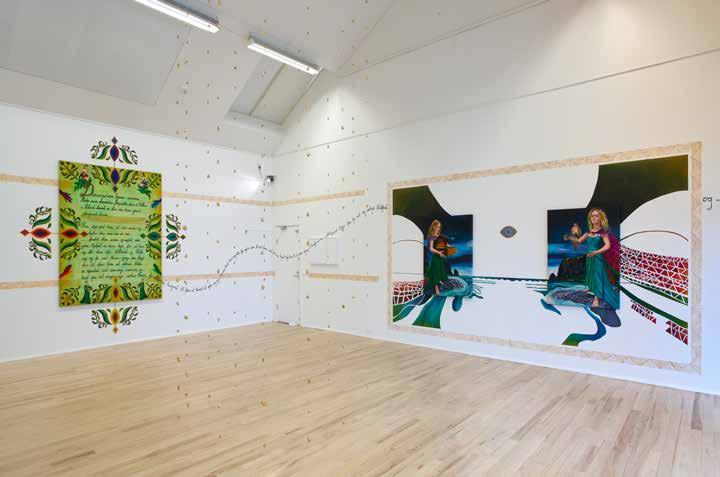
77

A Taste of Iceland’s Wild & Sweet
Laugarvatn’s Lindin Restaurant & Café Bistro
Lindin
Restaurant & Bistro Café, located on the banks of Lake Laugarvatn, has a firm foundation of culinary excellence that attracts patrons from around the world. Owner, Baldur Öxdal Halldórsson, pastry and master chef, trained at the Hotel and Restaurant School of Iceland between 1980–1984, received training as a pastry chef at the Culinary Institute of America, New York in 1986–1987, and attended the prestigious Richemont Professional School in Lucerne from 1988–1989, where he developed his interest in the art of chocolate and learnt the secrets behind a great dessert.
After his training abroad was completed, Baldur began something of a culinary revolution in Reykjavík, working at many of the top hotels and restaurants, creating spectacular and sophisticated desserts that were hitherto unknown in the capital.
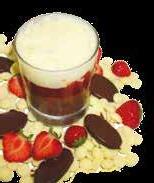
Mecca of Icelandic Wild Game
Baldur took over Lindin Restaurant in 2002 which has become known as the ‘Mecca of Icelandic wild game’, with its lamb, fish, seafood and game caught in the wild. His menu
is seasonal and features exotic dishes that can be made from reindeer, goose, duck, cormorant, guillemot, puffin, minke whale or pan-fried arctic char. Always on the cutting edge, you can be sure of finding new and exciting additions to his dessert menus such as his delectable chocolate mousse with raspberry sauce, with watermelon pieces and white chocolate foam and his bilberry skyr mousse with crow berries and rhubarb.
Passion for purity and freshness
Passionate about food, Baldur insists on the absolute purity and freshness of all his ingredients. Located in the heart of Iceland’s ‘greenhouse belt’, he can take his pick of the choicest fruits and vegetables grown in the area year round. The restaurant even has its own small kitchen garden, providing a fresh supply of rhubarb, chervil, red and blackcurrants. The lamb and venison come from N.E. Iceland and are known for their delicious flavour, fed on mountain herbs. The Arctic char are caught fresh from either Lake Þingvellir or Lake Apavatn daily.
In the heart of the Golden Circle
Lindin is located in the village of Laugarvatn, right beside the lovely natural sauna, steam baths and pool at the Fontana Spa. The 45 minute scenic drive from


Reykjavík takes you through enchanting landscapes. Laugarvatn is half-way between Þingvellir and Geysir and Gullfoss, making it an excellent choice for a day trip to in one of the most scenic areas of Iceland. You can also now stay at any time of year in Laugarvatn at either the Golden Circle Apartments next to Lindin, the Gallerí Guesthouse or the village hostel to enjoy the Northern Lights in winter and the midnight sun in summer and the spectacular views from Lindin’s terrace and garden across the lake to the Hekla and Eyjafjallajökull volcanoes. –EMV/ASF
Tourism , C ulT ure and B usiness issue 53 • 2024 www.icelandictimes.com
Lindin Restaurant Lindarbraut 2 • 840 Laugarvatn +354 486 1262 lindin@laugarvatn.is www.laugarvatn.is
Discover an Ice-Blue World
Jökulsárlón Boat Tours on the Jökulsárlón Glacial Lagoon
There are few glacial lagoons existing in the world today and certainly none more aweinspiring and accessible than the renowned Jökulsárlón Glacial Lagoon, situated at the head of Breiðamerkulljökull outlet glacier on the peerless Vatnajökull Glacier.
Sail Among the Icebergs Jökulsárlón ehf has been operating boat tours on the east side of the lagoon for the last 30 years. Sail among the icebergs in a 40 minute amphibious boat tour, or take an exciting one hour Zodiac boat tour that goes further into the lagoon, getting you as close as is safe to the icebergs and the glacier itself.
Coffee with a View
Enjoy the spectacular view over the lagoon in the small café where you can get homemade soup with bread, fresh sandwiches, cakes with coffee or tea which can be either taken out on the terrace or consumed inside.
The Show of Fire and Ice
The magnificent annual fireworks display over the lagoon can be described without a doubt as one of the most memorable fireworks shows on earth. The event, held annually in late August, starts at 11.30 pm, with proceeds going to Iceland’s volunteer search and rescue organization, ICESAR.
Located within a few hundred metres of Route No. 1, the lagoon is actually much bigger and deeper than it appears. With an area measuring over 28 square


km (9.6 square miles), you could easily fit the island of Heimaey (in the Westman Islands) into it with room to spare. At over 300m (984 feet) deep, five Leaning Towers of Pisa, stacked one on top of the other, would fit inside the lagoon with room to spare. With the ebb and flow of the tides, sea water enters into the lagoon bringing with it krill, capelin, herring and salmon. Curious seals know where the food is plentiful and can often be seen bobbing along with the currents, swimming in and out between the icebergs and appearing to enjoy the attention from onlookers on the shore. Across the road, near the delta where fresh and salt water converge, you can walk down to the water’s edge to witness the rather surreal sight of baby ‘bergs’ beached on the shoreline. -EMV
Jökulsárlón Reynivellir 3 781 Höfn í Hornafjörður +354 478 2222 jokulsarlon@jokulsarlon.is www.jokulsarlon.is


79 79
The Skaftareldar DISASTER


Exactly 240 years ago, one of the biggest volcanic eruptions in Icelands history began, on June 8, 1783 by Laki mountain, southwest of Vatnajökull in Vestur-Skaftafellssýsla. The eruption opened a series of about 135 craters 25 km long, known as the Laki craters. The eruption lasted eight months. The lava field, the Skaftáreldar lava field, is the second largest in historical times with about 13 km3 total volume of lava covering an area of 580 km2 of land. The lava actually has two names, the western part is called Eldhraun, while the eastern part is called Brunahraun. The Laki craters
www.icelandictimes.com 80
Today the Lakagígar craters are grown with moss belying their catastrophic history. The area is charming for outdoor activities such and hiking and simply enjoying the power of nature.

were declared a preserved area in 1971 and are now part of the Vatnajökull National Park. Ash and volcanic fumes initially spread as a poisonous fog over Iceland that later also spread over Europe, America and Asia. Heavy pollution accompanied the haze, causing livestock to die in great numbers which, in turn, led to famine— not just in Iceland but all over the Northern Hemisphere. These were the Móðuharðindi, the greatest disaster to have befallen Icelanders both up to that time and ever since. About 20% of the population died in the Móðuharðindi. It was only a few generations ago. Will we get another eruption like this soon? Only time will tell. Photographs & text: Páll Stefánsson



www.icelandictimes.com 81
Tjarnargígur south of Laki
Summer night by Skaftá, wich runs through the area
Lakagígar in the foreground, with Fögrufjöll by Langisjór to the north and the west of the craters, as seen in the wintertime
The road that goes around Lakagígar

Sagnaheimar Folk Museum in the magical Westman Islands
The Folk Museum of Vestmannaeyjar–the Westman Islands – is a museum built on old traditions. In addition to the many artifacts housed there, today’s technology gives the history and culture a new dimension. While the adults are learning about the stories of fishing, cliff hunting, the Eldfell eruption of 1973 and the Algerian pirate raid of 1627, the children can dress themselves in pirate costumes and search for hidden treasures in the Pirate Cave. Displays and exhibits showing the deep connection with the Mormons, the colourful sports history of the Islands, the reconstructed fishing shack from yester-year or the “Festival” tent where islanders entertain during the annual Þjóðhátíð – National Festival can also be investigated. At the end of the 19th century, when the population was about 600, great changes took

place. In 1904, the first motorised boat was purchased, and more followed soon afterwards. By 1930, the population had risen to 3,470. Now the Westman Islands are Iceland’s most productive fishing centre.
The Turkish Abduction
Another traumatic event befell on the Islanders 16th July 1627, when three Algerian ships sailed north up the Atlantic to the eastern shores of Heimaey. It is known as the Turkish Abduction because Algiers was under the control of the Turkish Ottomans. Three hundred Pirates disembarked and captured 242 islanders whom they brought to Algeria where they were sold into slavery. The story of this fateful day is vividly captured. The pirate cave is a wonderland for children. One of

the captives, Lutheran minister Ólafur Egilsson returned in 1628 and wrote a book about the event. In 1636, ransom was paid for 34 of the captives but most spent the rest of their lives in bondage in the Muslim world. After this, a small fort was built at Skansinn – The Bastion– as armed guards kept watch from Helgafell mountain. The Islands are famed for their annual Þjóðhátíð – National Festival – which attracts thousands of people from the mainland. The festival was first held in 1874, at the commemoration of the millennium of the settlement of Iceland. For the first time, a Danish King was visiting Iceland: Christian IX, who brought the Icelanders their Constitution that paved the way to sovereign statehood. The Westman Islanders were prevented from sailing to the mainland for the festivities by bad weather, so held their own celebration locally and have done so ever since.
The Mormon connection
The Mormons also have their historical story exhibited at the museum. The first Icelandic Mormon missionaries, Þórarinn Hafliðason from Vestmannaeyjar and Guðmundur Guðmundsson from Rangárvellir on the south coast, worked in Vestmannaeyjar. Between 1854 and 1914 about 200 Islanders emigrated from the island to the Western World. The Mormon exhibit is in collaboration with Brigham Young University in Utah, along with a large group of enthusiasts who have researched the history and destiny of these pioneers. -HH
Sagnheimar – Folk Museum

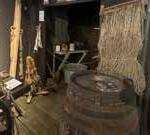
Ráðhúströð Safnahúsi, 900 Vestmannaeyjum +354 488 2050 sagnheimar@sagnheimar.is sagnheimar.is
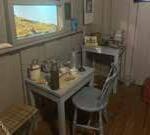
Tourism , C ulT ure and B usiness issue 53 • 2024 www.icelandictimes.com 82
SKÓGAR MUSEUM
The Crown Jewel among regional museums
Skógar Museum can be found by the majestic Skógafoss waterfall in South Iceland, 150 kilometres east of Reykjavík. It is a cultural heritage collection of over 18,000 artefacts exhibited in three museums. The Museum displays a variety of tools used for fishing and farming, as well as some artefacts dating back to the Viking Age. There is also the Open Air Museum, showcasing historic buildings from the area, and the Technical Museum, which exhibits many historic vehicles and features from the transportation history of Iceland. This museum is the Crown Jewel of Icelandic regional museums.
Fisheries and Agriculture
The Maritime section of the Folk Museum contains a large collection of objects related to fisheries along the south shore of Iceland. Fisheries in this region were unusual because Iceland’s sandy south coast has no proper harbours; boats had to be launched from beaches open to the North Atlantic waves. The centrepiece of the section is Pétursey, the eight-oared fishing boat, built in 1855 and used until 1946. The Agriculture section contains tools and utensils used on farms in past times; riding gear, haymaking tools, woolworking and iron-working equipment. In a subsistence economy, farming households had to be self-sustaining, making and repairing all their own tools and utensils. The Folk Museum also has an esoteric collection of everything from textiles to natural history to rare books.
Turf houses & Technology
In the original turf houses rebuilt in the Open Air Museum one can catch Skógar Museum The Crown Jewel among regional museums the atmosphere of times long gone and experience the living conditions in Iceland throughout the centuries. The Technical Museum
tells the story of technology and transportation and its development in Iceland in the 19th and 20th century. Among the many automobiles and two airplanes on exhibit is the world’s best preserved Kégresse P15N track – a mustsee for all car enthusiasts!
Þórður Tómasson
Þórður Tómasson, the former curator and one of the founders of Skógar Museum has now sadly passed away. Þórður was born in 1921 in Vallnatún in South Iceland and as he was growing up he quickly developed an interest for folkloristics and the cultural heritage of Iceland. At a young age he started to notice the swift changes taking place in the daily life of what was essentially a farming culture that had not changed for centuries. As working methods modernized and old equipment became redundant, the tendency of the farmers was to get rid of it. Þórður started to collect old equipment that was being discarded. He also spent a long time listening to the elderly as he was growing up and later started to document this oral history.
In 1949 a new boarding school opened in Skógar and the first exhibition of the museum took place in the basement of the new school December 1st the same year. The museum expanded rapidly and in 1954 - 1955 a new exhibition building was built east of the boarding school where the museum is currently located. Initially Þórður Tómasson took responsibility for the museum, and in 1959 he was appointed as curator. He was an organist in two churches and for many years he was a member of the parish councils of both. For ten years he was also a member of the Rangárvellir county council. In 1997 Þórður was awarded an honorary doctorate by the University of Iceland for his contribution to research in the public interest.

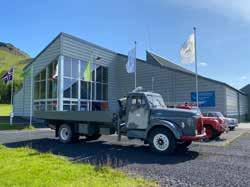

Þórður was one of the most knowledgeable scholars in Icelandic cultural heritage and folkloristics. He has written many books and articles about the subject. The artifacts that he has collected and researched over the years is of great value for the cultural heritage of Iceland. For over 60 years Þórður also took an active part in greeting the visitors of the museum. He would gladly guide people around the museum and usually he would end the visit singing and playing the harmonium. Þórður's heritage and life's work can be seen in Skógar Museum.

Skógar Museum Safnavegur 1, Skógum, 861 Hvolsvelli +354 487 8845 booking@skogasafn.is www.skogasafn.is
www.icelandictimes.com 83
On Top of the world Glacier Jeeps
The largest glacier in Europe



www.icelandictimes.com 84
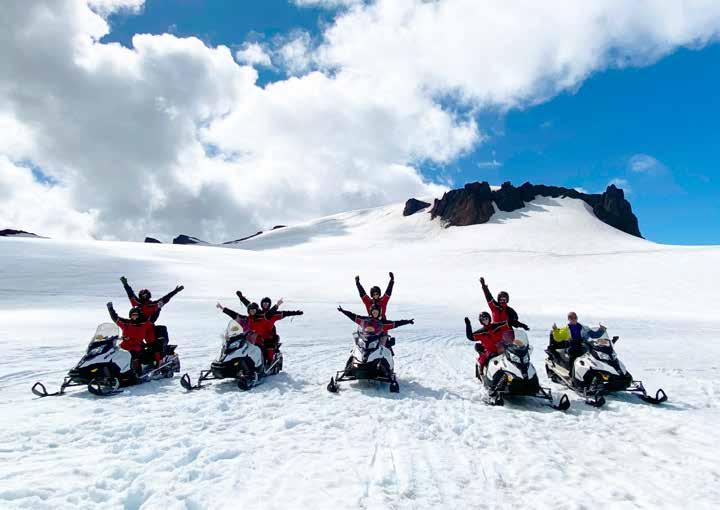
The weather report was looking good—a full day of sunshine ahead of me and temperatures above 10°C. I was on my way to a face to face encounter with the world’s 3rd largest glacier, the mighty Vatnajökull. This trip would mark a couple of firsts for me— my first time ever to set foot on a glacier, and my first time to travel by snowmobile. Needless to say I was really excited!
I first met Kristján and Bjarney, of Glacier Jeeps, at our pre-arranged meeting place: Vagnsstaðir. This is the official meeting place for all Glacier Jeep summer tours. Glacier Jeeps has years of experience conducting jeep, snowmobile and hiking tours on the glacier since 1994. (Bjarney has been helping run the family business since she was 14 years old.) I parked my car and joined them in their sturdy 4WD, which wound its way slowly every upwards on road F985 after a short drive on Route No. 1. The gravel road twisted and turned around hairpin bends, past waterfalls and deep canyons. My guides fill me in on the details of the landscape, pointing out how the glacier has crawled across the terrain, devastating everything in its path along with other interesting facts.
It is about a forty minute drive from Vagnsstaðir to the roots of Vatnajökull Glacier where we suit up with boots, warm overalls and helmets for the snowmobile excursion.
Now it’s time to test drive the snowmobiles. I am a little hesitant at first and Kristján shows me the ropes. It looks easy enough but I decide that I prefer to let him drive over the glacier with me sitting safely behind him on this ‘skidoo for two’, at least until I get a better feel for it. ‘Off we go over the wild white yonder, climbing high into the sun’ to paraphrase an old song, with cloudless blue skies above us and the wind in our faces. Further along we stop and dismount, to take in the magnificent panoramic views over the glacier, the Atlantic Ocean and the town of Höfn far below in the distance. I felt like I was on top of the world and it was truly a cause for celebration!
Kristján jokes that we cannot go onwards unless I drive. By now I am feeling a little more sure of myself and agree to give it a try. This time we are off to inspect a massive sheer rock face that rises straight up from the glacier at an elevation of 1200 metres. Finally, our one
hour snowmobile adventure comes to an end and it is time to return to base.
Glacier Jeeps also offers a hiking tour of the glacier that comes with all the equipment such as safety helmets, climbing irons and ice axe, instruction and a guide, included in the price.
In case you just don’t think a strenuous hike or a thrilling snowmobile adventure is for you, then Glacier Jeeps offers an alternative to see the glacier in a comfortable, specially equipped 4WD and is available year round, weather permitting. Each tour is only 3 to 4 hours in total, giving you plenty of time to do other things with your day, even though once you are up there you may not want to come down. Although it’s best to book one day in advance, you can also just show up at Vagnsstaðir at either 9.30 am or 2.00 pm and join the tour from there.
Vatnajökull Glacier Jeep tours: a must for your bucket list! -EMV
Glacier Jeeps
Vagnsstaðir, 781 Suðursveit +354 478 1000 info@glacierjeeps.is www.glacierjeeps.is
www.icelandictimes.com 85
Photografer: Kristinn H. Benediktsson
VOLCANIC VESTMANNAEYJAR
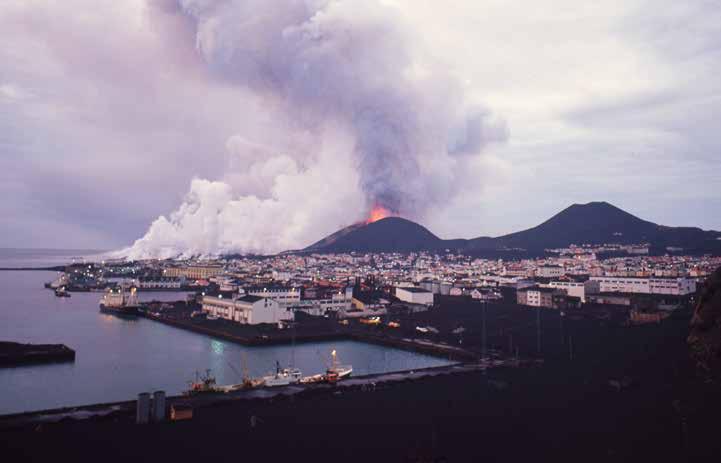

Vestmannaeyjar (the Westman Islands) is a hidden gem in south Iceland, an area with rich birdlife, culture and natural beauty. With fewer than 5,000 residents, it’s an isolated community surrounded by beauty.
Volcanic eruption of 1973
On the morning of 23 January 1973, a volcanic eruption changed the lives of the people that called the Westman Islands home. The eruption, which came without warning, and lasted for five months, displaced more than 3,000 Icelanders. Ash from the eruption fell for weeks, destroying homes, livestock, and
personal possessions. Most of Heimaey’s residents left by boat, and thankfully there were no deaths. Following the eruption, Eldfell, a volcanic cone that means “fire mountain” in Icelandic, formed. It stands 200 metres high and has become some of Iceland’s newest land. Today, Icelanders and tourists alike hike in the region and soak up the scenery.
Eldheimar museum
Eldheimar is a fascinating interactive museum about the 1973 volcanic eruption. It includes photos, surviving structures, and an overview of the volcanic geology of the
region. Videos illustrate the force of the volcanic eruption and destruction left in its wake, and maps light up on the walls, pointing out volcanoes around the island.
The collection continues to grow. Earlier this year, Eldheimar received for preservation a remarkable film that geologist Ingvar Birgir Friðleifsson shot during the first days of the eruption. He was then studying for a PhD in geology at Oxford. The day after the eruption began, the director of the school’s geology department invited him to go to Heimaey to film to preserve the event for science.
Close to the mainland
Visitors can get to the island through the Herjólfur ferry, which runs daily from May to September. Travellers can bring their cars on the ferry for an extra fee, but it isn’t necessary, given the island’s small size. The Herjólfur ferry departs from Landeyjahöfn in South Iceland, and the ferry ride is about 40 minutes, making it a quick and easy trip.
Great place to visit
For a small island, there are a lot of activities and attractions to take advantage of. There
www.icelandictimes.com 86
Kristín Jóhannsdóttir, Director at Eldheimar - Volcano Museum. Photo Baju Wijono


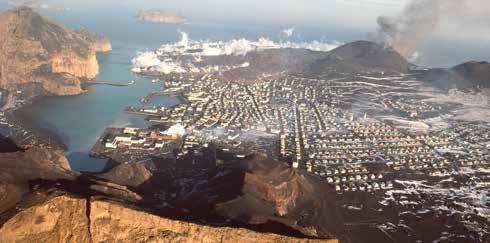
are boat tours, rib safaris, ATV tours, hiking trails, bicycle rentals and chances to see wildlife.
In fact, Westman Island’s puffin population is the main attraction for tens of thousands of visitors as their bright orange feet, round bodies, and striped bills are irresistible, making them Iceland’s unofficial mascot. It’s lovely to walk along the sea cliffs and spend some time with the adorable birds, photographing them and taking in the landscape. The prime puffinwatching season is from June to August, so if you are visiting Iceland during the summer, make sure to stop over in the Westman Islands.
The Westman Islands’ newest wildlife attraction is for whale lovers. The arrival of Little Grey and Little White, two beluga whales that were moved from China to Iceland in 2019, now call Vestmannaeyjar home. Sea Life Trust, a nonprofit, is behind the sanctuary, and guests can join a boat tour of the bay the whales now call home.
The Westman Islands are an ideal spot to spend some time when visiting the south of Iceland. There are numerous hotels, guesthouses and restaurants that make overnight stays irresistible.
At the Eldheimar Museum, there is also an exhibition about THE VOLCANIC ISLAND SURTSEY, which was formed during an eruption that began on November 14, 1963, and lasted for approximately four years. Today, Surtsey is a unique natural wonder, listed as a UNESCO World Heritage Site.
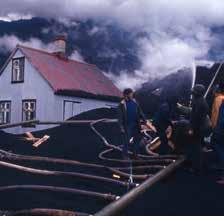
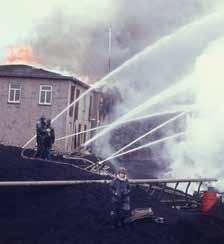

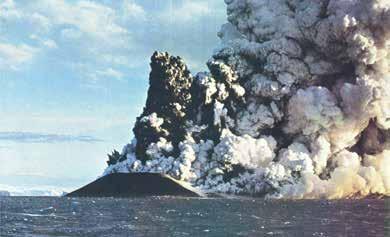
www.icelandictimes.com 87
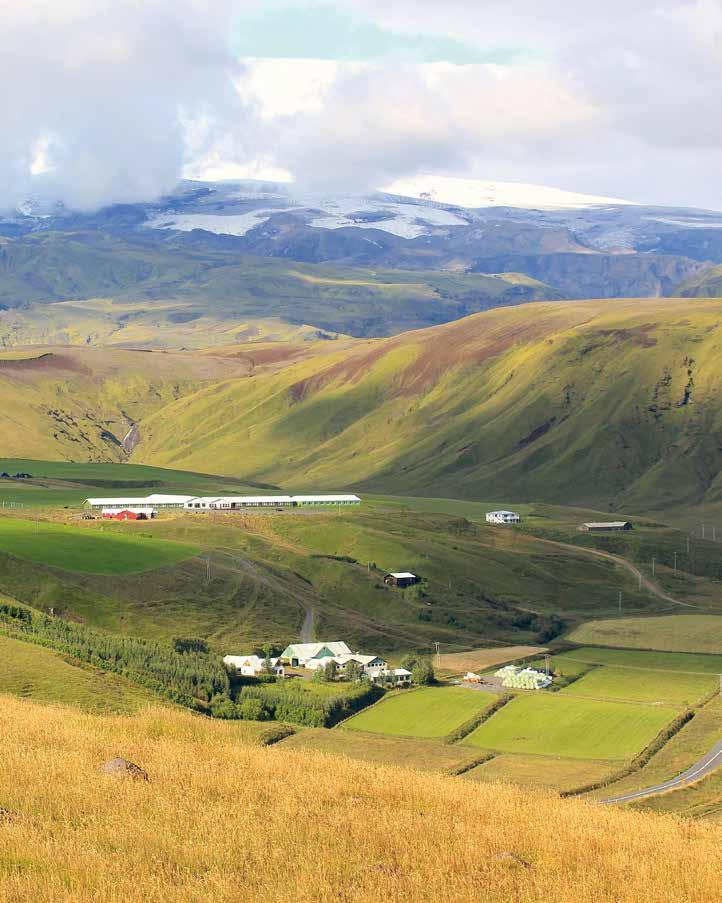
The Surround Sounds of Silence at Hotel Dyrhólaey
www.icelandictimes.com 88

A picture is worth a thousand words
There is an Icelandic expression that says “when you have such a great view, who needs pictures on your walls?” The phrase echoed my feelings exactly as I arrived at Hotel Dyrhólaey for the first time. A breathtaking panorama stretched out before me and far below, a dusting of newly fallen snow covered the Reynisfjall ridge, which suddenly took on new proportions. Bright green fields of cultivated grass lay before me and the blue expanse of water embraced the Dyrhólaey promontory in the distance. I felt as if I could stay here all day, drinking in the fresh air and the outrageously sublime view.

A bit of history
Hotel Dyrhólaey’s owners grew up here amidst all this splendour, and the family can trace its roots back to the 19th century when their great, great grandparents began the business of dairy farming and sheep breeding. As Icelandic society gradually shifted from a largely agrarian society to a more modern one, the need for dedicated hotels became apparent at the time when tourism in Iceland was in its infancy. The family decided to take the plunge and the hotel was born.
A passion for the Northern Lights
If one of your passions in life is to view the Northern Lights in a spectacular location, unperturbed by city lights, Hotel Dyrhólaey is the place to be. The hotel offers a wake-up service should the Northern Lights appear overhead in the wee hours of the morning.
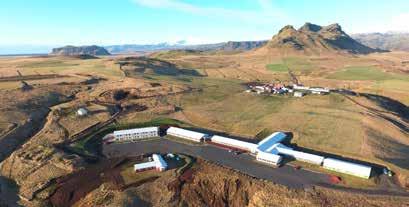
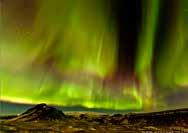
The hotel boasts 110 fully equipped standard rooms, spread out over three wings that branch off from the spacious lobby and dining room that make up the hotel’s core. A full bar and an á la carte restaurant opens for guests in the evening, and overlooks the dazzling panoramic view that welcomes you on your arrival.
Surrounded by nature
Hotel Dyrhólaey is conveniently located near many south coast attractions such as the iconic village of Vik, the famous Reynisfjara black pebble beach and sea stacks and of course the Dyrholaey promontory after which the hotel is named. For horse lovers there is horse riding in the magnificent nature, and for the very adventurous, there are glacier walks and snowmobiling on Solheimajökull glacier —all within a 10 to 15 minute drive from the hotel.
If you are after that special moment in time where mountains, sea and sky converge, enveloped by the sounds of silence, consider a stay at Hotel Dyrhólaey and let the magic begin. -EMV
Hotel Dyrholaey
Brekkur/Ás, 871 Vík +354 487 1333 dyrholaey@dyholaey.is www.dyrholaey.is
www.icelandictimes.com 89
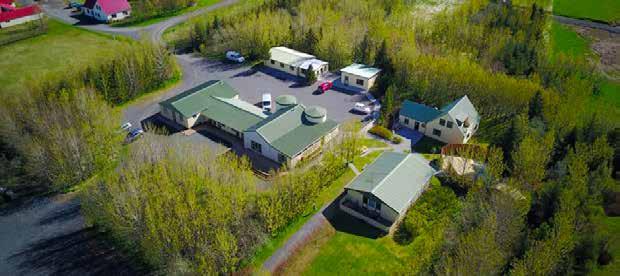
THE HOMELY HERD’S LAIR
Hotel Hjarðarból lies in the South-West between Selfoss and Hveragerði, 30 minutes from Reykjavík
Hotel Hjarðarból – Herd’s Lair – is a friendly family-run guesthouse in the countryside close to Hringvegurinn – The Ring Road or Route #1 – midway between the towns of Hveragerði and Selfoss in South West Iceland, just 30-minutes drive from the capital, Reykjavík. Hotel Hjarðarból has a homely atmosphere reminiscent of a bygone era. R ooms come with shared or en-suite bathrooms. It provides a good base for sight-seeing and exploring around South Iceland and the Reykjanes peninsula and for day trips to Reykjavík, as most of the major attractions are within a relatively short driving distance.
Old farm buildings
Hjarðarból is set in reconstructed farm buildings surrounded by woodland. This laid-back accommodation is in an amazing area of hot springs and waterfalls in Hveragerði’s Geothermal Park with various activities, such as horseback riding and hiking, nearby. Hotel Hjarðaból

features 30 comfortable, down-to-earth and homely rooms with rustic furnishings that vary in size and set up, with double, triple, quadruple, and special family rooms with private or shared bathrooms suitable for all types of travellers.
Built in the 1950s
The Hjarðarból farm was a part of a government project to give people who wanted to be farmers a chance to do so. The Old House was built in the 1950s, a beautiful farm with cattle, horses and sheep. Today’s main building was a barn with two sour-hay towers and a cowshed. The towers are still standing, the barn is now the main hall and the lounge is in the old cowshed. There is also the old sheep shed, where the horses most likely stayed with the sheep. The last ‘original’ house is the shed where tools were kept. This has been converted today into rooms #13-14.
Helga & Guðbrandur
Sigríður Helga, known as Helga, runs this unique hotel with her husband, Guðbrandur Sigurðsson. They have raised three children, lived in Denmark, where they started a restaurant, before returning and taking the risky decision to move their family from Reykjavík and 9-5 work. Guðbrandur is a carpenter. As he has worked in that field for most of his life, renovations haven’t been be a problem. -HH






info@hjardarbol.is https://hjardarbol.is/
Tourism , C ulT ure and B usiness issue 53 • 2024 www.icelandictimes.com 90
Hotel Hjarðarból Hjarðarból, 861 Ölfus +354 567 0045

A DELIGHTFUL EXPERIENCE IN STOKKSEYRI
Icelandic Times checks out Fjöruborðið Restaurant
Haveyou strolled along the beautiful shore on Stokkseyri's beach? Have you been spellbound by the white foaming waves out by the horizon and let the silvery waves lapping at the shoreline chase and tease you? Under a blue-pink sky mirrored in the water, this surface tempts and draws, yet is the harrowing limit of our human world. It's where golden langoustines hook their claws together and dance a belly dance while mermaids serve tables amongst shrimp wrapped in seaweed, clapping shellfish and inquisitive haddock. This is a magic moment carrying you away to an intoxicated state of well-being and lust. Your greatest desire is to lick on langoustine in garlic butter, gulp down the soup that has been lovingly pampered - little changed through the years
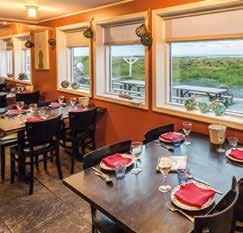

T he soup is magical. It is suitable for numerous occasions and happy moments on ordinary days, but Fjöruborðið takes no responsibility for consequences or stirring adventures that could result from ingesting it. It has a will of its own and, as such, it is risky for those who don't want to venture beyond the average. This is the most famous langoustine soup in the Republic of Iceland, prepared by handsome cooks who step naked out of the ocean at Stokkseyri with their catch: the plumpest langoustines who desire only one thing - to get onto dry land. Adventurous creatures from the ocean world want to join us in just the same way as we want to join them in the depths.
People have struggled against storm after storm to get here and enjoy this
soup. The desire for it can be so strong that rational thinking simply blows away with the wind. Below the black rock face at the Þrengsli mountain pass, between mountain vistas, under the stars, people rush toward the sea to sit down with our guests and party-happy ghosts, surrounded by some tickling pleasure coming from magical bowls at The Seashore, where a thousand candles cast their glow on weathered faces and loving wineskins. Matarást, the Icelandic expression for "love of food" takes on a new meaning.
Fjöruborðið Restaurant in the village of Stokkseyri is an enchanted place of delight. People have to tear themselves away from it - but that's all right. There's only positive magic inside, tickling both stomach and soul. And now the magic has been sealed into jars for those who struggle with an irresistible craving for this great seafood delicacy from Icelandic waters, even when they're unfortunate enough to be not close to the restaurant. Enjoy! Remember to live life to the fullest, and enjoy every pleasure and suspense that a good day brings

Fjöruborðið Eyrarbraut 3a • 825 Stokkseyri +354 483 1550 info@fjorubordid.is www.fjorubordid.is
www.icelandictimes.com 91
Hotel Eyjafjallajokull, Cottages
and Golf Resort
A LITTLE BIT OF ICELANDIC PARADISE

Set in one of the most idyllic locations in South Iceland, Hellishólar offers a variety of accommodations for the weary traveller who is looking for a good night’s sleep in peaceful surroundings.
The sprawling Hellishólar property is located 10 minutes from Route 1, near the village of Hvolsvöllur in the middle of Fljótslíð, a picturesque farming district sheltered by three glaciers: Mýrdalsjökull, Eyjafjallajökull and Tindfjallajökull.
Cosy Cottages
Why not bed down for the night in one of Hellishólar’s 24 popular, fully-furnished cottages? Each cottage can sleep from 3 to 6 people and has a small kitchen for making your own meals. If you prefer, you can also eat your meals in the on-site restaurant that serves breakfast, lunch and dinner.
Hotel Eyjafjallajokull
At Hellisholar, there is also a Hótel Eyjafjallajökull with 36 spacious and comfortable bedrooms, each with an ensuite bathroom. A Glorious View of Nature
The views from Hellishólar are, in a word, stunning! In winter, when the Northern Lights are visible, one has only to step outside the door and look up. The lack of light pollution makes Hellishólar an ideal


location for viewing the Northern Lights. In summer, the long days bring optimum opportunities to experience the many activities that are possible at Hellishólar— trout fishing on the lake, salmon fishing from the river that runs through the property and enjoying a round of golf on the 9-hole golf course. Hellishólar is the

perfect base from which to explore South Iceland year-round. See you there! -EMV

www.icelandictimes.com 92
Hellishólar ehf 861 Hvolsvöllur +354 487 8360 hellisholar@hellisholar.is https://hellisholar.is/hotel/
DREAMING OF ICELAND
Glacier
Journey’s Adventure of a Lifetime
For many, a trip to Iceland is the culmination of dream; a long awaited journey that sometimes takes years of saving to achieve. And once you are finally here, the daunting task of choosing what to do, where to go and what to see begins. The good news is that Iceland is a fairly compact little country and many of the most sought after gems of Icelandic nature, particularly on the south coast, are within easy reach of the capitol.
One of south Iceland’s most awe inspiring natural phenomena is the formidable Vatnajökull Glacier that harbours no less than six volcanoes within its icy depths. The vast glacier spans a large portion of the south coast driving route and a visit to the glacier is undeniably one of the top “must-do’s” that should be on everyone’s bucket list.
Let the adventure begin Glacier Journey is a local, family run company that offers a variety of year-round snowmobile and jeep tours to the glacier and has received many glowing reviews over the years. Even if you have never had
any experience driving a snowmobile, the friendly guides at Glacier Journey are with you all the way– and learning how to drive a snowmobile is all part of the fun. At base camp you will receive warm overalls, helmets, gloves and a face mask that you can take home with you as a souvenir and then you’re off to explore the mesmerising beauty of Europe’s largest glacier by snowmobile.
A magical-mystical world of ice
The 1st of November to the beginning of March marks a very special moment in the year when it‘s cold enough to go ice cave exploring! Glacier Journey offers a 2.5 hour ice cave tour with a tremendous opportunity to explore the glacier inside and out. Experienced guides will lead the way into one of the ice caves that form at the edge of the glacier when the temps drop down below freezing and these icy-blue, fairy tale caves are safe to enter. The ice caves are ever changing but always remain beautiful and interesting and never cease to amaze.
Small groups and families welcome Glacier Journey caters to all sizes of groups, from company incentive tours to small groups and personal, private tours for the whole family. Young explorers under the age of eight are also welcome to visit the ice cave accompanied by their parents, of course. It’s soooo exciting!
See you soon on a Glacier Journey tour for the ultimate trip of a lifetime! -EMV
Glacier Journey
Vikurbraut 4 • 780 Höfn +354 478 1517
info@glacierjourney.is www.glacierjourney.is



www.icelandictimes.com 93



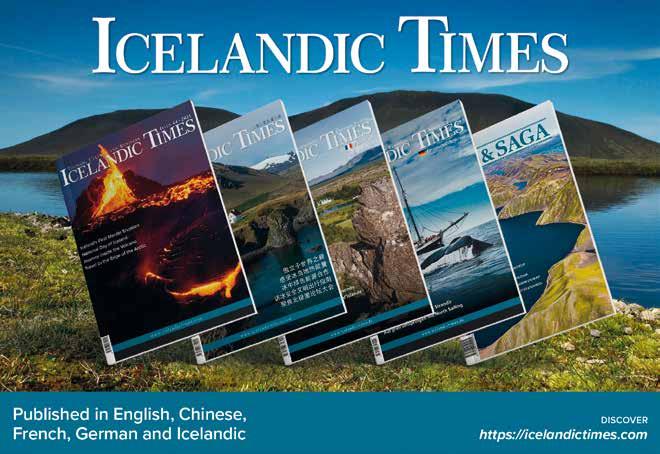
Visit the World’s Only Beluga Whale and Pu n Sanctuary! belugasanctuary.sealifetrust.org Book Online & Save!
Árnessýsla Heritage Museum presents: THE WOMEN OF EYRARBAKKI
The Árnessýsla Heritage Museum consists of many houses, most of which are located in the heart of Eyrarbakki, a fishing village on the south coast of Iceland with a population of around 600 people. The reception of the museum, and at the same time the largest exhibition space, is in Húsid (The House), a beautiful and historic merchant’s residence where the nearly 200-year-old history of commerce and culture comes to life for visitors. On June 9th, the heritage museum opens its 2024 summer exhibition, focusing on the role of women in Eyrarbakki during the 20th century.
Car trips that turned into a book

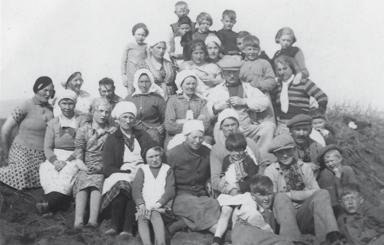

The exhibition is titled ‘The Women of Eyrarbakki’ and is based on the interviewing book by the same name, written by Jónína Óskarsdóttir. In the book, she conducts interviews with 38 individuals to delve into the lives and work of women who lived in Eyrarbakki during the 20th century,” says Linda Ásdísardóttir, curator at the Árnessýsla Heritage Museum. The idea for the book came during car trips that Jónína took with her mother around the town. “Whenever the two of them went for a drive around Eyrarbakki, Jónína’s mother would share stories of the lives and fates of the women she knew in town, as they drove past each house,” explains Linda. Jónína, who works as a specialist at the Reykjavik City Library, has spent recent years pursuing an MFA in writing at the University of Iceland, and her short stories and poems have been published in journals and books. She realized that there was an intriguing subject matter here that deserved a more detailed exploration. Thus, the car trips sparked another, much larger project—the book that was published last year.
The exhibition revolves around the significant interconnectedness in the lives of Icelandic women in the 20th century. It vividly portrays their shared experiences in everyday life, both good times and bad, and “especially the ever-present mutual support that is such a strong theme in this exhibition,” adds Linda. “Jónína spent many years conducting interviews that collectively formed the basis of the book, either with the women themselves or with their descendants if the women themselves had passed away.”
Behind Every Strong Woman is Another Woman
The background of these women was diverse, according to Linda, but they all needed to maintain this sense of solidarity in society, to be there for each other when difficulties arose, as there was no other official safety net to hold on to when times were tough. This theme is reflected in the exhibition.

Linda adds that although the exhibition specifically tells the stories of the lives and work of women in Eyrarbakki, everyone should be able to reflect their own experiences from their own local community in the stories of these women. “Women everywhere in Iceland faced the same everyday challenges as the women in Eyrarbakki. Some became widows, while others dreamed of getting an education. One particular woman aspired to become an actress in the capital, but the opportunity never presented itself, so she became very active in the local theatre group instead. Such stories can be found all over Iceland.”
Thus, the exhibition ‘The Women of Eyrarbakki’ will present narratives featuring 38 women, providing a true cross-section of the daily lives of Icelandic women between the years 1930 and 1980, approximately. It will also feature a collection of various artifacts and items related to the lives of these women in one way or another.

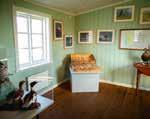
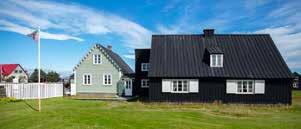
www.icelandictimes.com 95

EWES, RAMS, AND LOTS OF WOOL
It can be strongly argued that sheep have sustained the Icelandic nation for the first 1100 years, and even beyond the middle of the 20th century. Sheep would provide both food and unique wool, which kept us warm here in the north. Now, for the first time in the history of Iceland, there are more people living in Iceland than sheep: according to figures from Statistics Iceland, there are currently 365,290 sheep in Iceland, while the population of the country is 403,044 according to the National Registry. The record number of sheep since the settlement began occurred in 1977, with 896,000 sheep in the country, while the Icelandic population was 222,658. In 1760, there were 357,000 sheep in Iceland to a population of 43,716. If sheep were to be in the same proportion as then, there would be 3.5 million sheep here instead of merely 365 thousand. But then again, habits have changed; two years ago, lamb lost its first place as the meat that Icelanders consume the most, after 1147 years unchallenged at the top. Chicken took the top spot, and last year pork shot past lamb as well. A new era beckons, when lamb is in the bronze position after over a thousand years at the top. Photographs & text: Páll Stefánsson
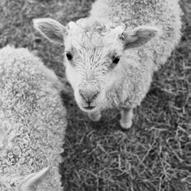

Tourism , C ulT ure and B usiness issue 53 • 2024 www.icelandictimes.com 96
A tiny newborn lamb, at Hólar in Hornafjörður.
A rather impressively horned ram at Þverá in Fnjóskadalur.


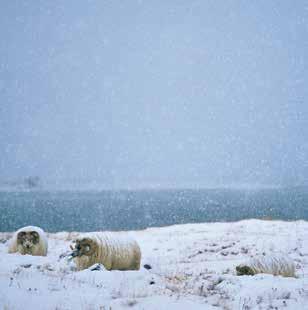
www.icelandictimes.com 97
Sheep round-up at Lokastaðir in Dalsmynni, up north in South-Þingeyjarsýsla.
Cooling off in a mound of snow on Hellisheiði, Norður-Múlasýsla. Rams on winter pasture near Lake Mývatn, northern Iceland.
The Bobby Fischer Center
It is housing a memorabilia of the 11th World Chess Champion BOBBY FISCHER and the Selfoss Chess Club.
The American Bobby Fischer became the World Chess Champion when he defeated the Soviet grandmaster and reigning World champion Boris Spassky in Reykjavik in the summer of 1972. The match is generally referred to as the Match of the Century. It took place at the height of the Cold War, mirroring the tense relations between the two superpowers, United States of America and the Soviet union. Since 1948 Soviet chess players had held the World championship title - uninterrupted for quarter of a century. On display at the Bobby Fischer Center in Selfoss are among other things Spassky´s and Fischer´s scoresheets, a printout from the radiation measurements demanded by Spassky´s delegation after the 17th game and a replica of the chess board used during the match which was staged in Laugardalshöll in Reykjavik. In addition many curious items related to Bobby Fischer’s stay in Iceland during his last years ( 2005-2008 ), for example his chair from the antiquarian bookshop Bókin in Reykjavik. He died on 17th of January 2008 at the age of 64. Bobby Fischer´s final resting place is at Laugardælir cemetery, a few hundred meters away from Bobby Fischer center.





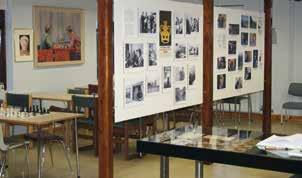
Tourism , C ulT ure and B usiness issue 53 • 2024 www.icelandictimes.com 98

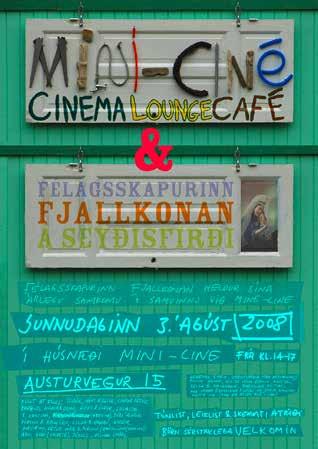

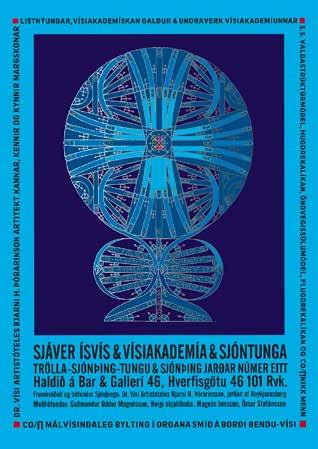
Published in English, Chinese, French, German and Icelandic


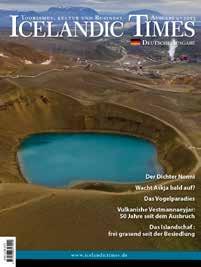





WE ARE FLUENT IN 5 LANGUAGES!










































 Svartsengi við Grindavík, en byrjað var að byggja orkuverið 1976.
The Hellisheidi Geothermal Plant has been in operation since 2006.
Svartsengi við Grindavík, en byrjað var að byggja orkuverið 1976.
The Hellisheidi Geothermal Plant has been in operation since 2006.






































































































































































































































































































































